Welcome to my blog, in which I post photos from recent travels and photography ideas.
These are posted irregularly, so log in at your leisure to catch my latest ramblings.
October 29 - Portugal, Day 12
This morning was sunny but with fog swirling around us at lower elevations.
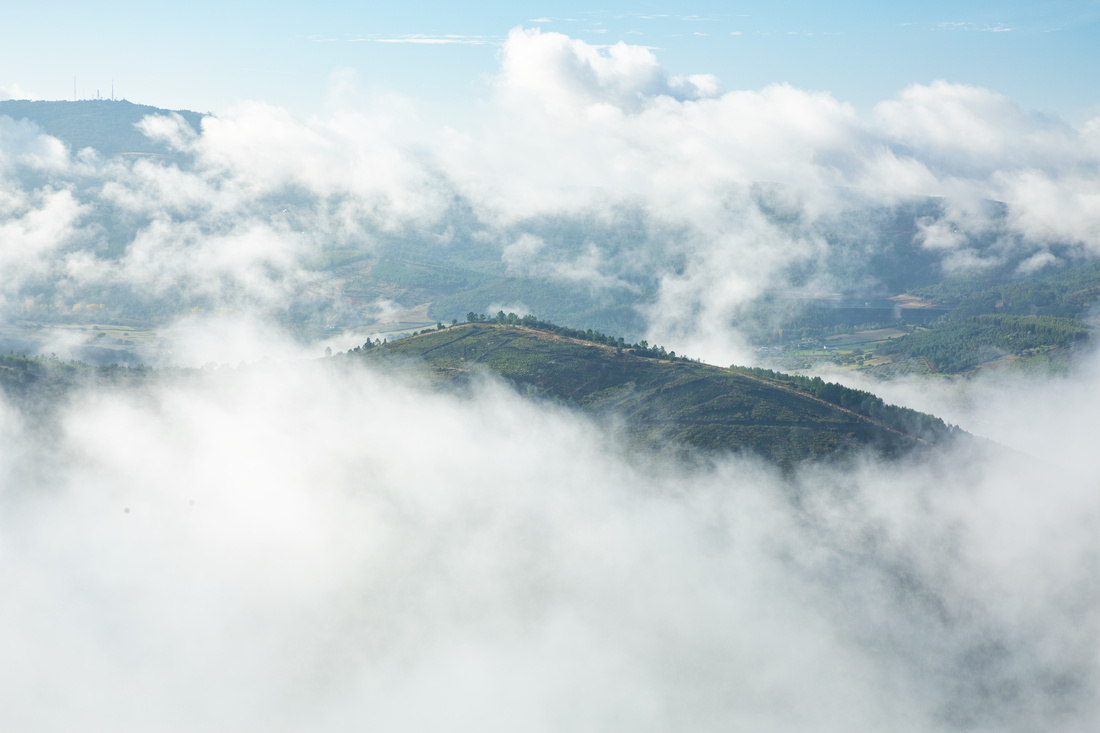

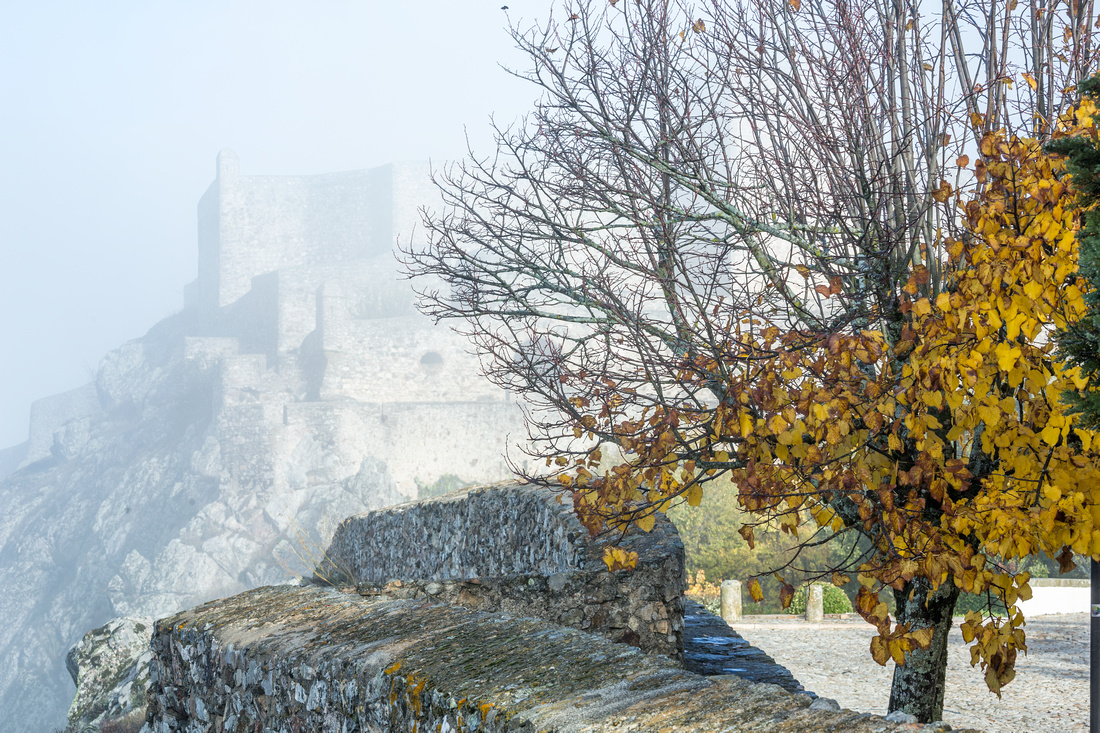
 Following breakfast, we decided to visit the castle, whose origins date from the 13th century, though most of what we see dates from the 17th century. The castle is quite extensive, as we discovered once we entered.
Following breakfast, we decided to visit the castle, whose origins date from the 13th century, though most of what we see dates from the 17th century. The castle is quite extensive, as we discovered once we entered.
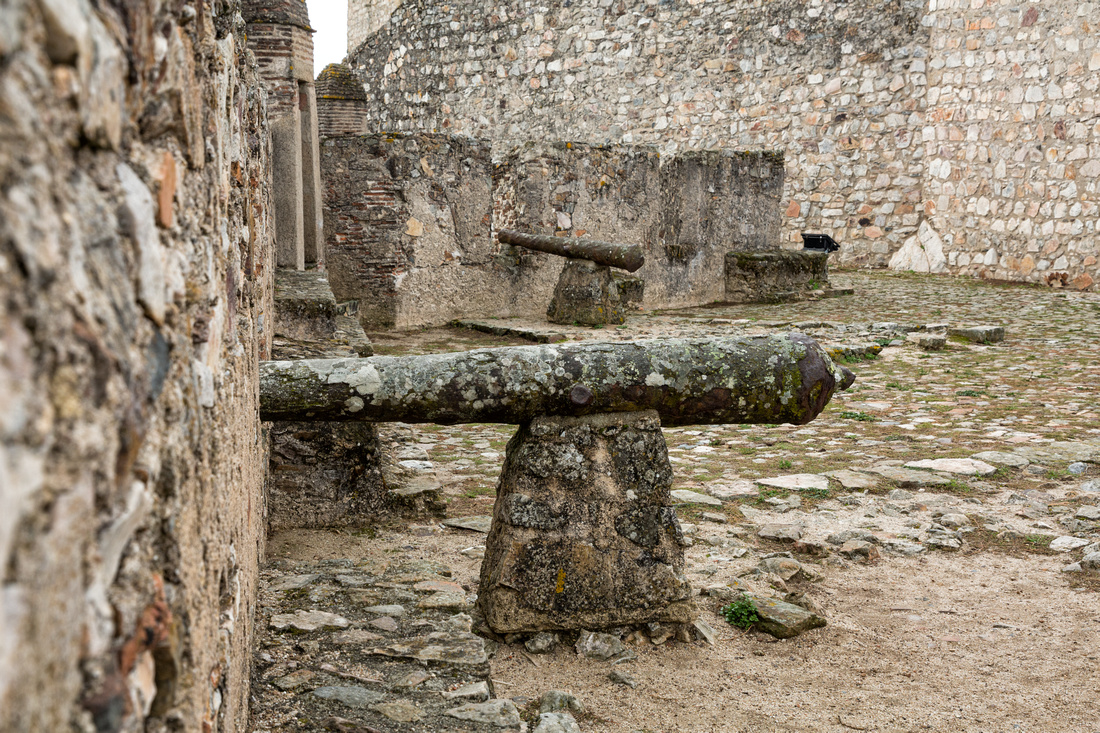
 Since we were only ten kilometers from the Spanish border, we thought we should go into Spain for a drive.
Since we were only ten kilometers from the Spanish border, we thought we should go into Spain for a drive.
We drove to the closest town, Valencia de Alcantara. Having read that this region had the most extensive ancient monuments, we went to the information centre to get directions, as many of these are located in the surrounding countryside.
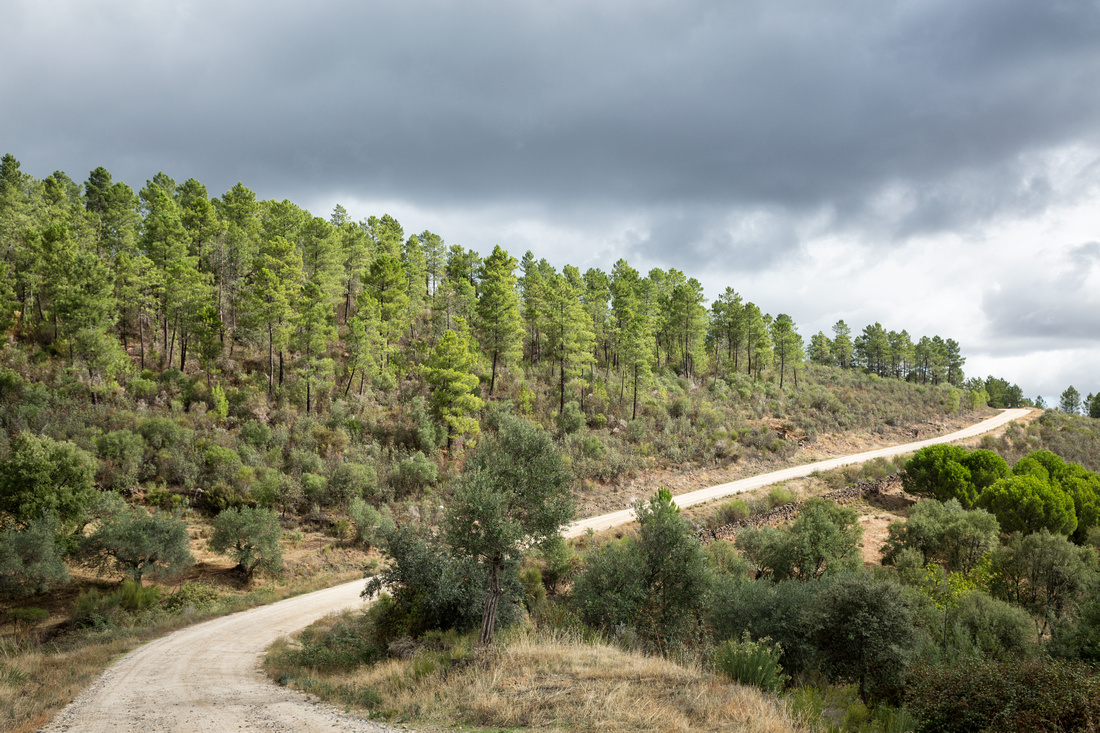
 We had to get off the main roads to find these monuments. It got rougher than this road.
We had to get off the main roads to find these monuments. It got rougher than this road.
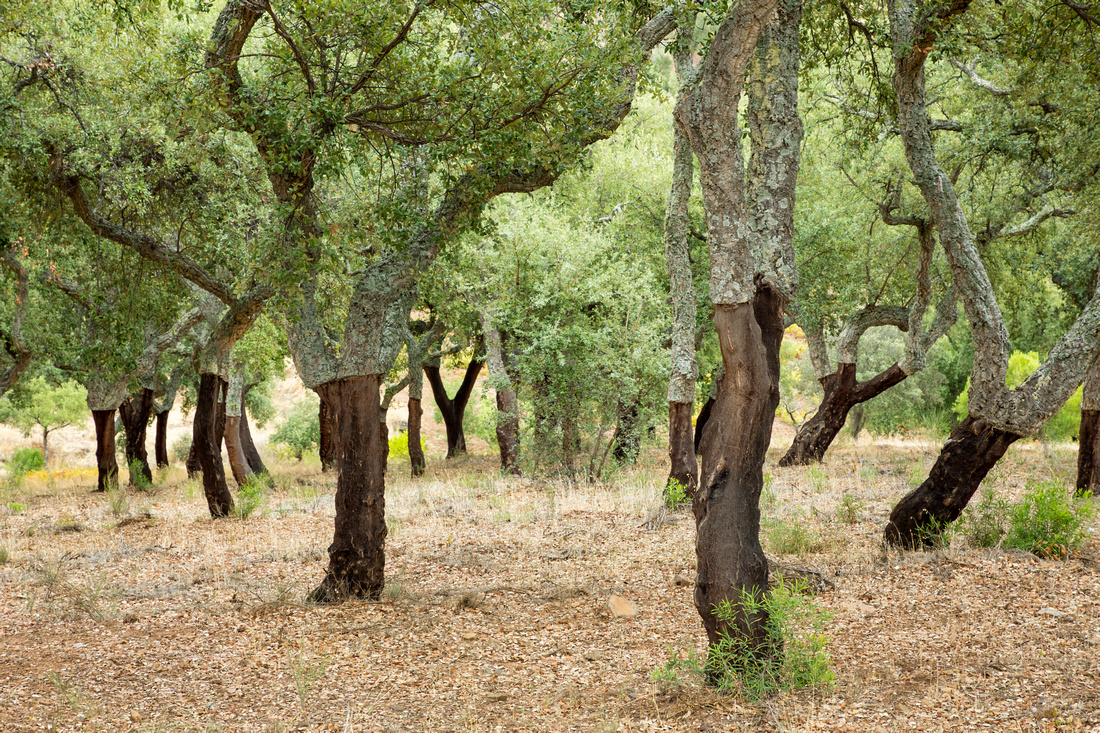
 The area was very rocky, but with small parcels of agriculture, as in this cork tree grove.
The area was very rocky, but with small parcels of agriculture, as in this cork tree grove.
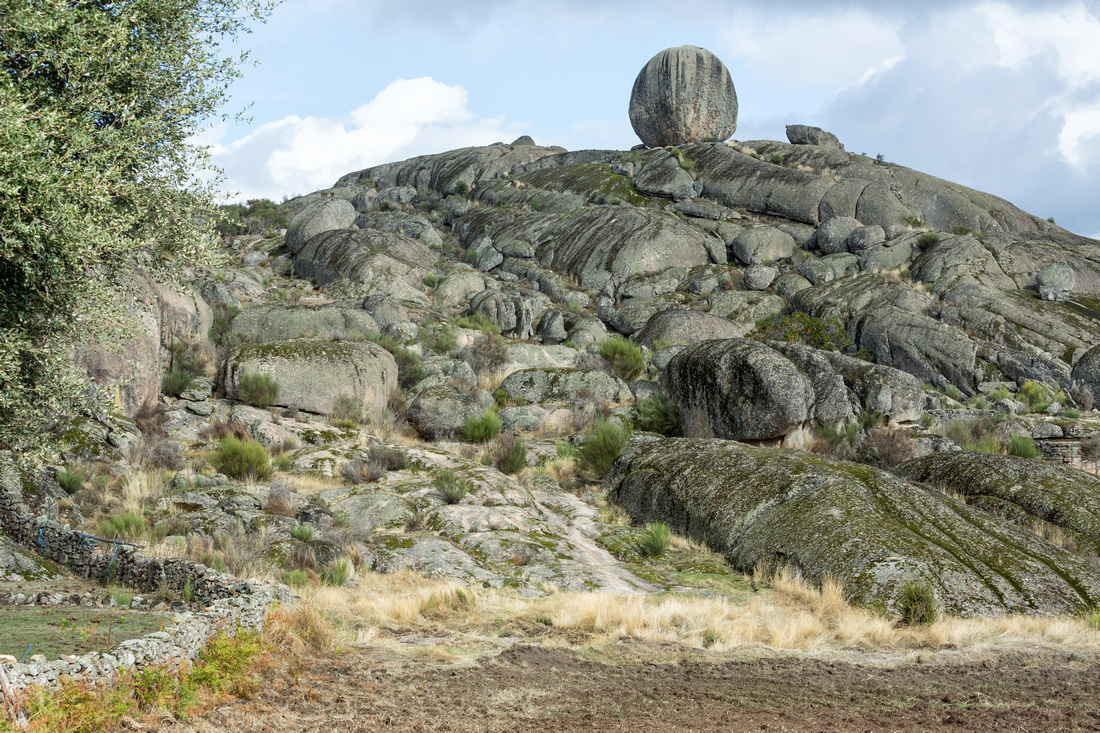

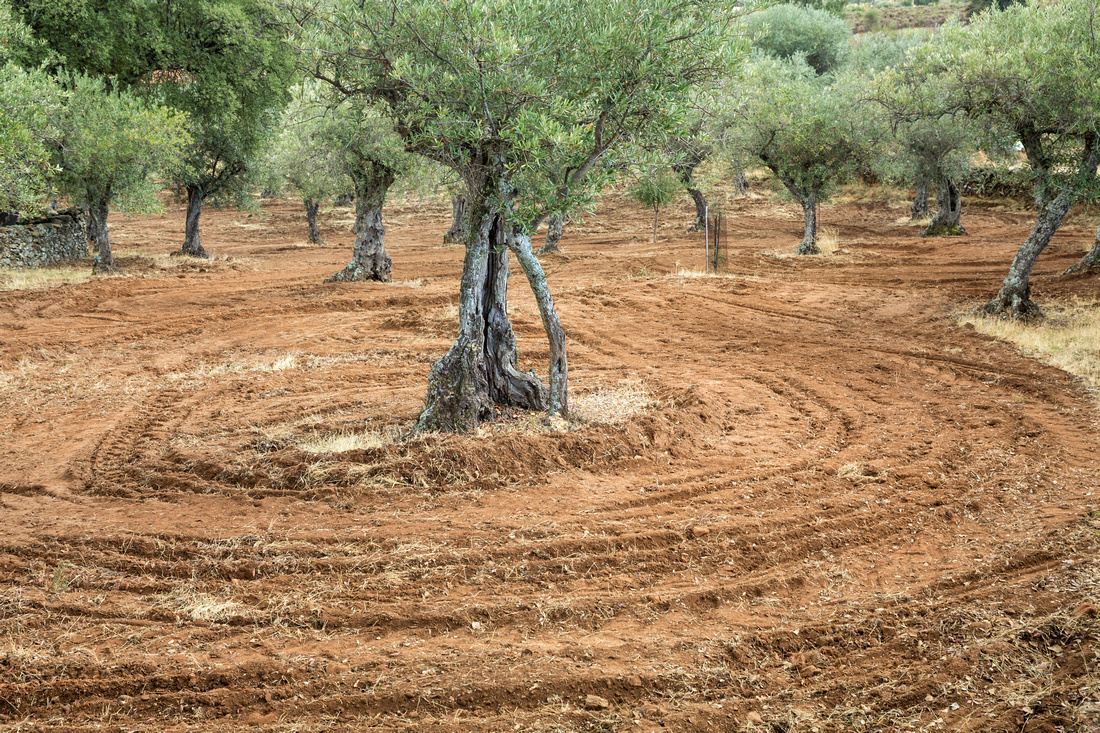
 This farmer had tilled the earth in his olive grove.
This farmer had tilled the earth in his olive grove.
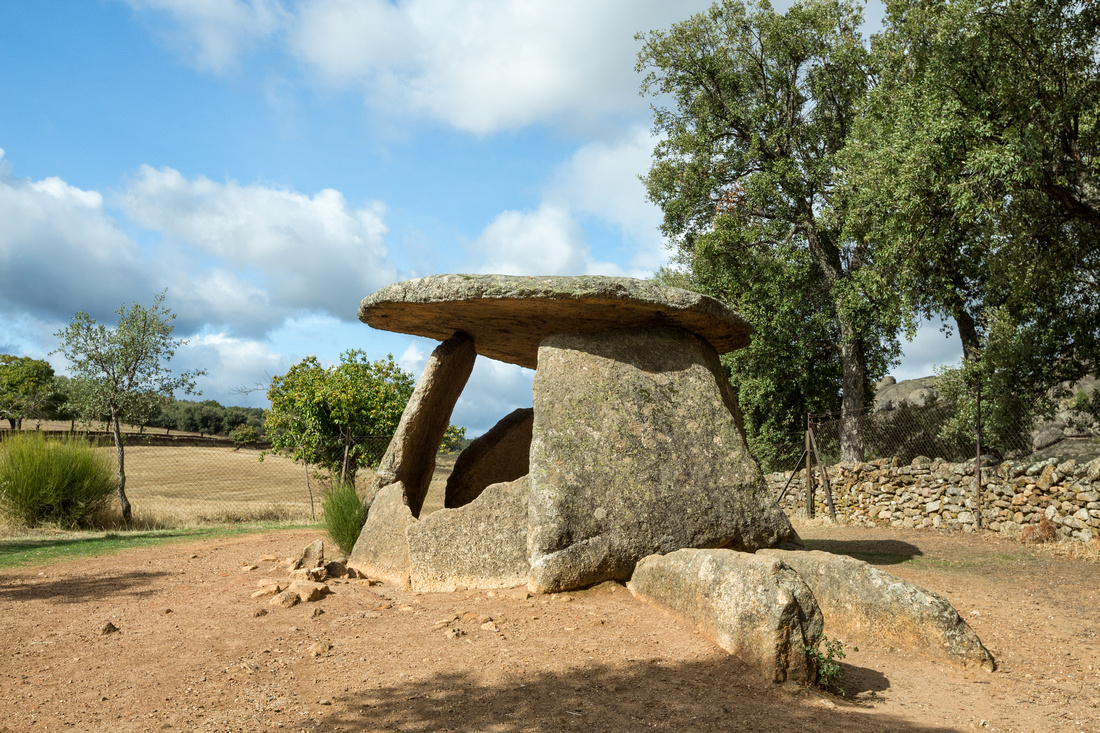
 We finally found one of these ancient ruins, the Los Mellizo dolmen. Fifty-five of these ancient burial sites have been unearthed in the region, and many still probably to be discovered.
We finally found one of these ancient ruins, the Los Mellizo dolmen. Fifty-five of these ancient burial sites have been unearthed in the region, and many still probably to be discovered.
We explored two other dolmens that were close by. This one is Cajiron II.
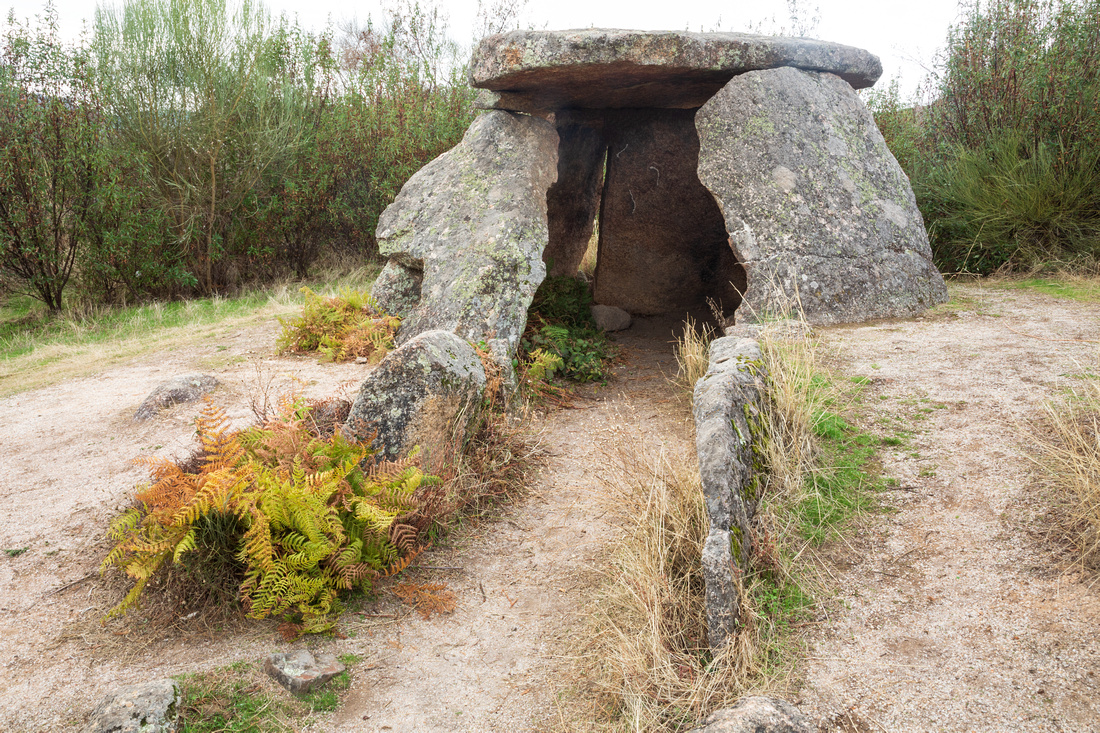
 Cajiron I nearby was not nearly as well preserved.
Cajiron I nearby was not nearly as well preserved.
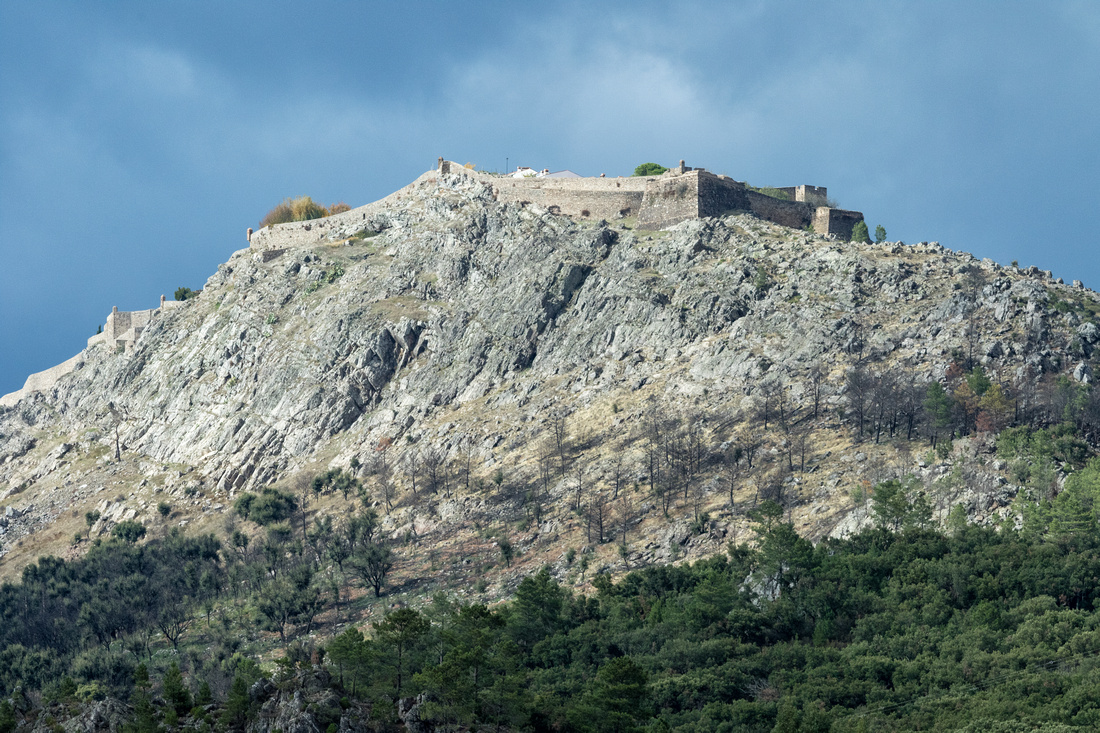
 This was our view of Marvao as we returned from our venture into Spain. Then it was the drive up again.
This was our view of Marvao as we returned from our venture into Spain. Then it was the drive up again.
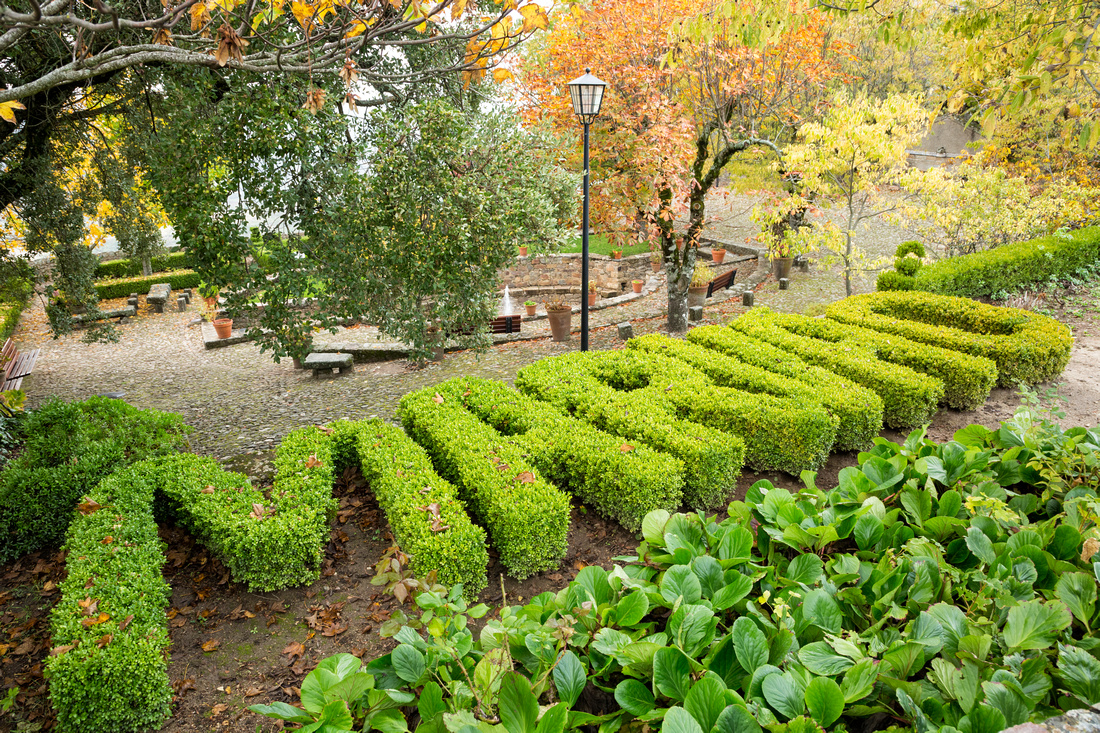

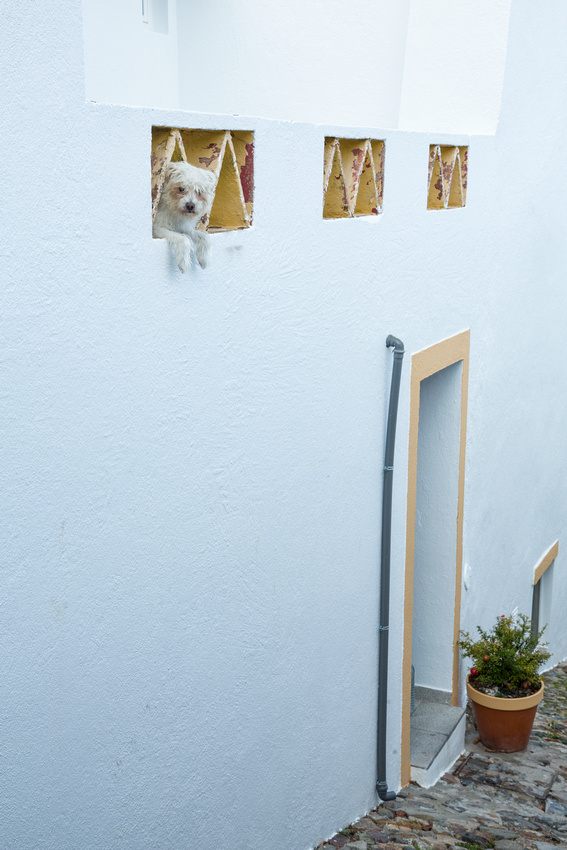

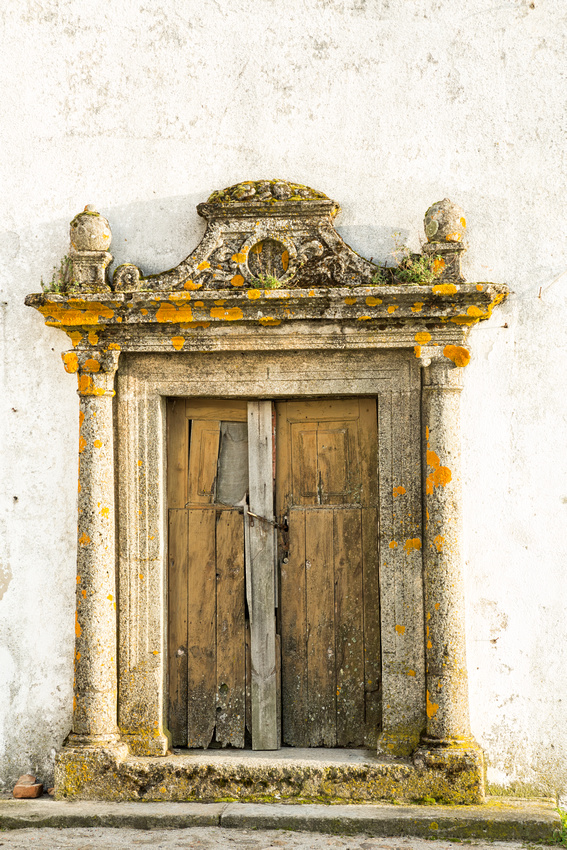

This is a doorway from the 16th or 17th century.
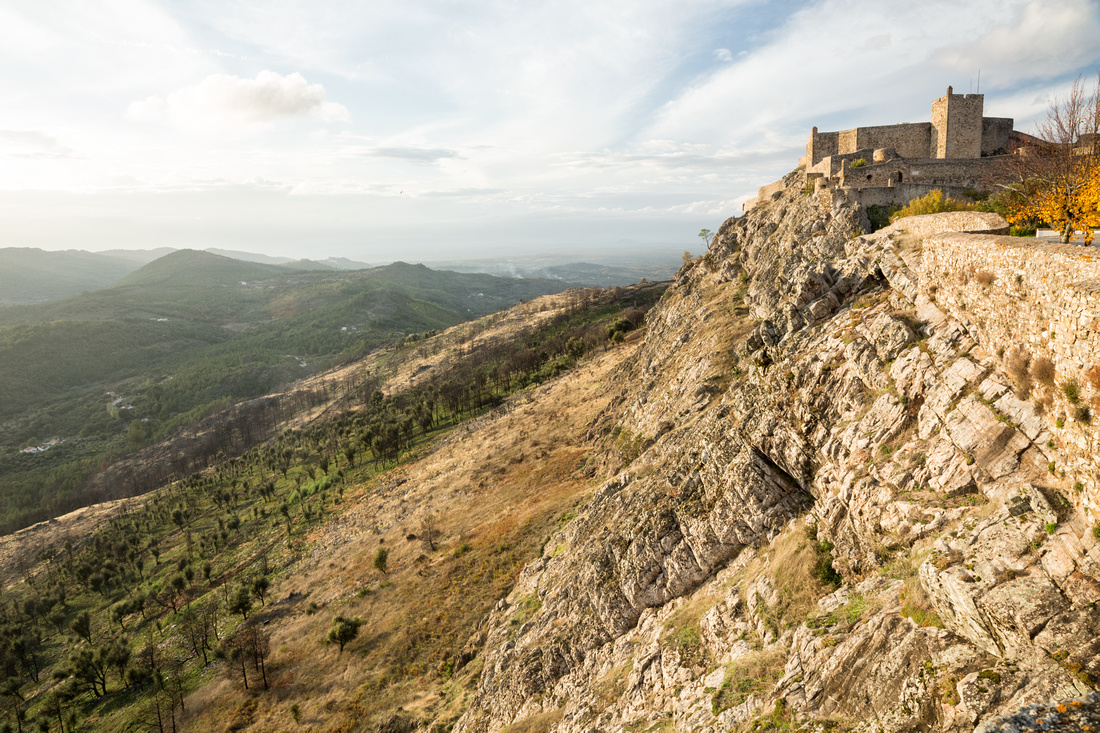
 This is evening light on the castle. I was hoping for a nice sunset, but clouds covered the western horizon.
This is evening light on the castle. I was hoping for a nice sunset, but clouds covered the western horizon.
So we settled for a dinner of a couple traditional Alentejo meals, with the requisite vinho tinto.
October 28 - Portugal, Day 11
This morning we left Casa Vinhao, where we've been for the last five nights. This photo shows the sitting area of the house, which was a fantastic place to have stayed.
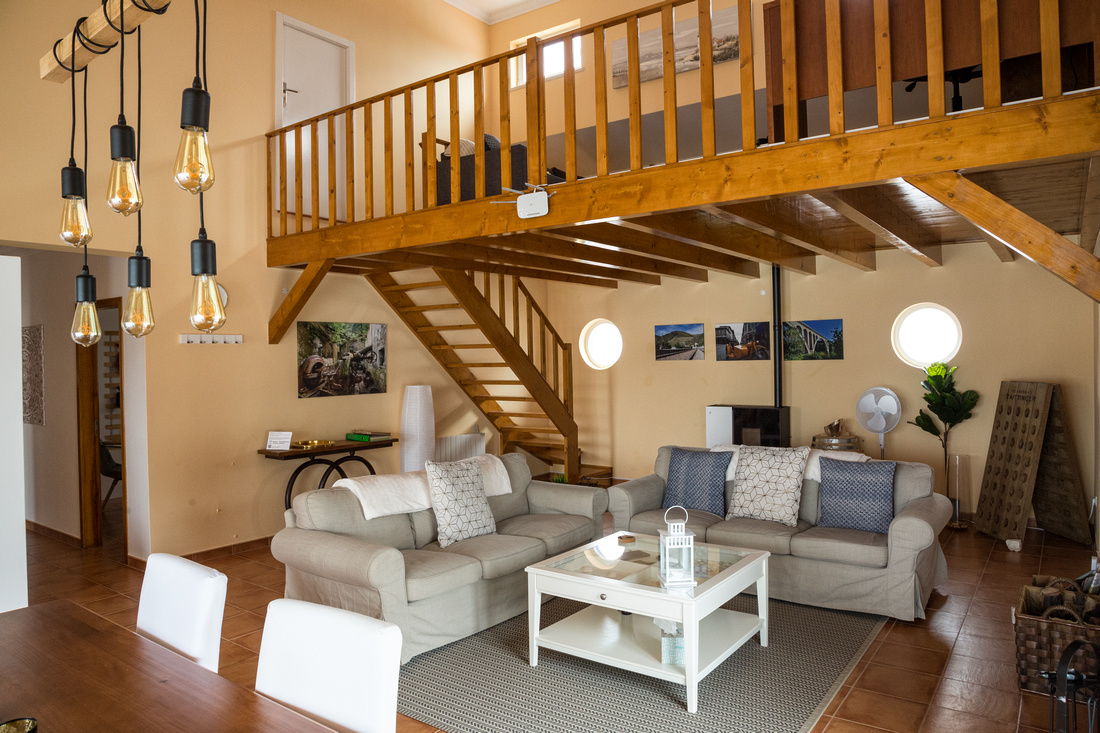
 As Jan was out walking her dogs, she stopped by to say good bye.
As Jan was out walking her dogs, she stopped by to say good bye.
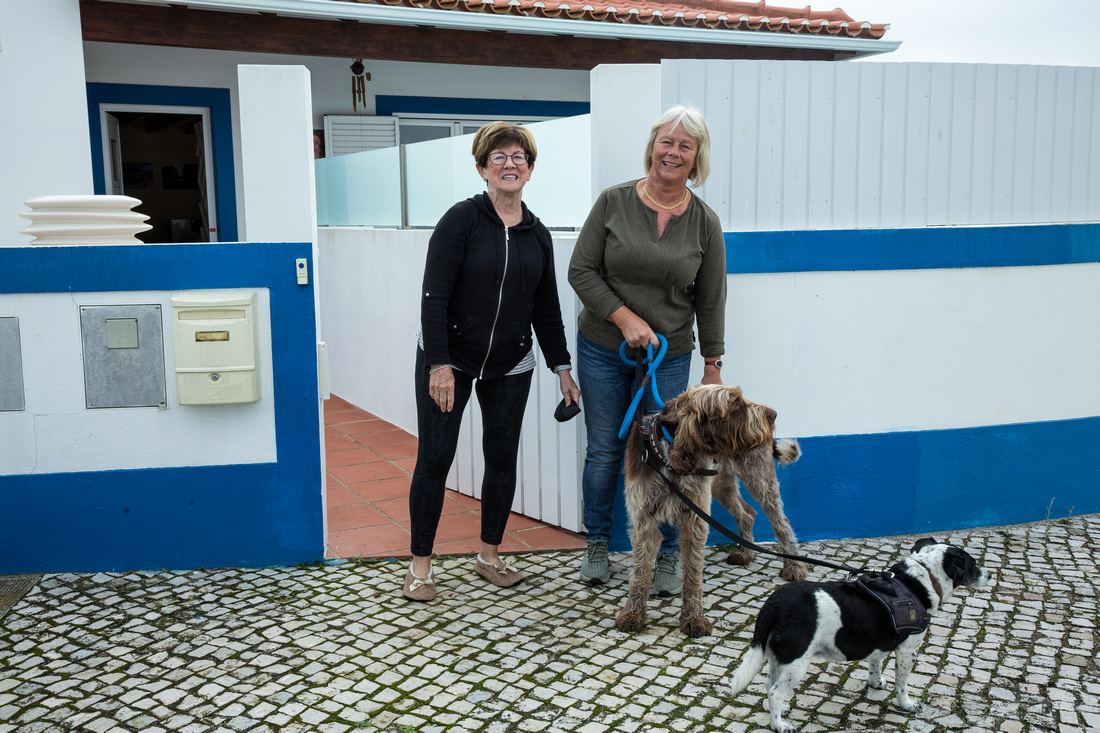
 These photos I took shortly after we left Gracieira.
These photos I took shortly after we left Gracieira.
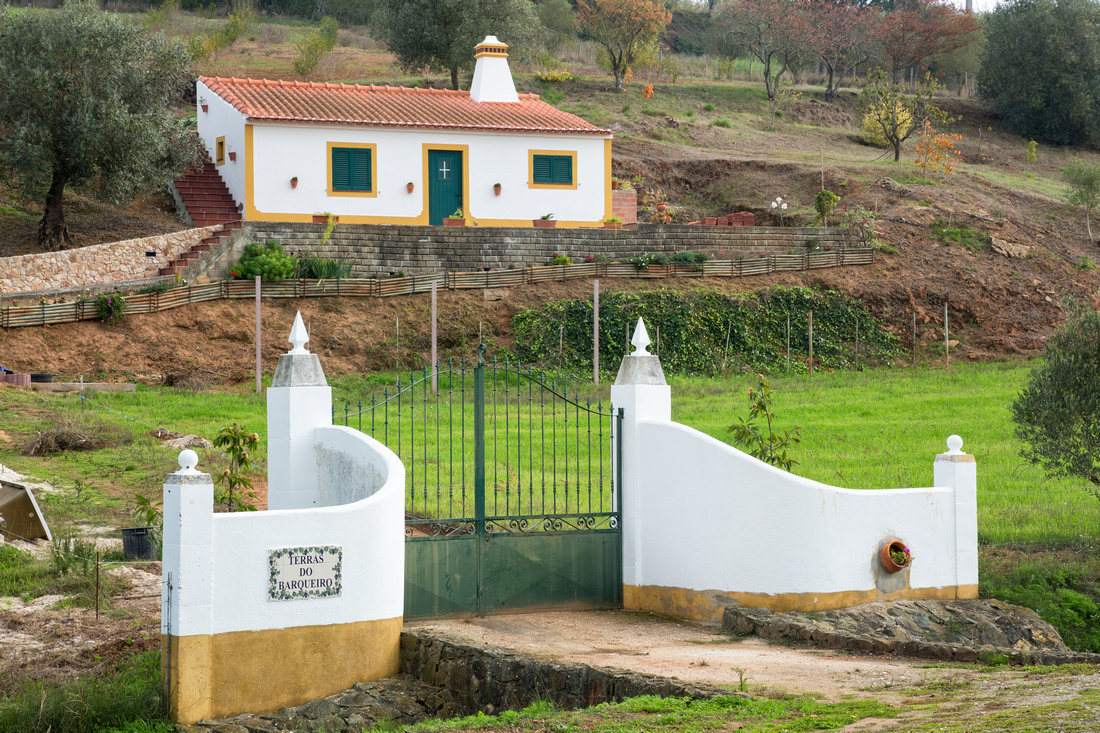

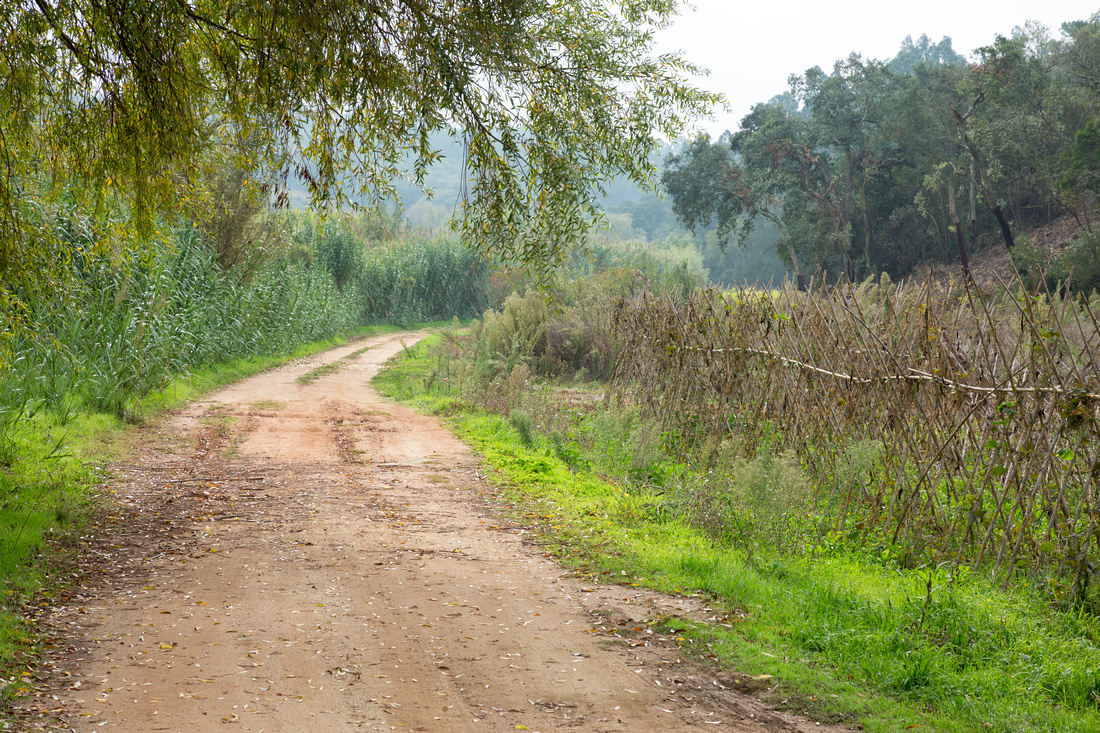
 We headed east on the Auto Estrata (the motorway). The skies were extremely hazy for a long while, so the photo ops were not good.
We headed east on the Auto Estrata (the motorway). The skies were extremely hazy for a long while, so the photo ops were not good.
As we drove east, the landscape changed. First we were in an agricultural region, then into forests where there has been much clearing and then replanting, and then into hilly terrain. We eventually exited the motorway.
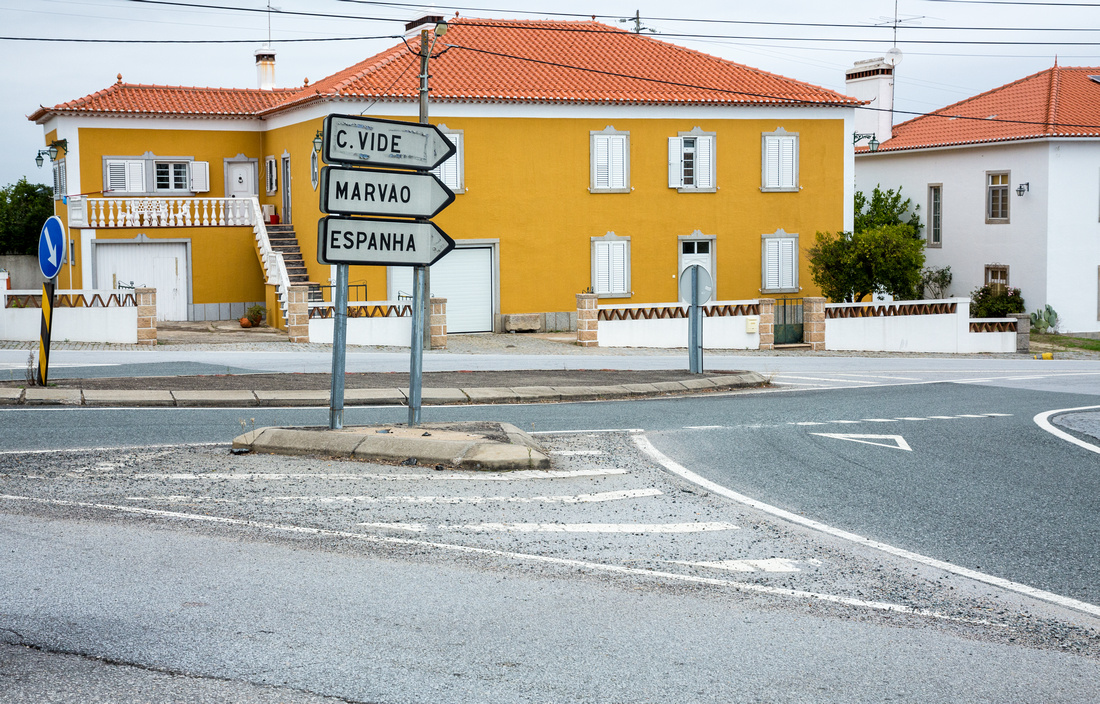
 Our destination was Marvao, near the border with Spain.
Our destination was Marvao, near the border with Spain.
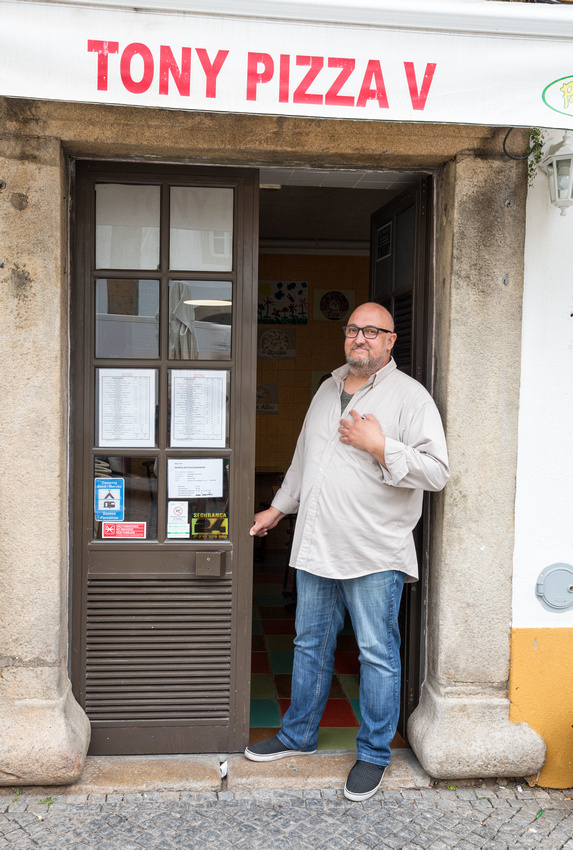

We stopped at Castelo de Vide for lunch, where we each had a very tasty mini pizza - perfect!
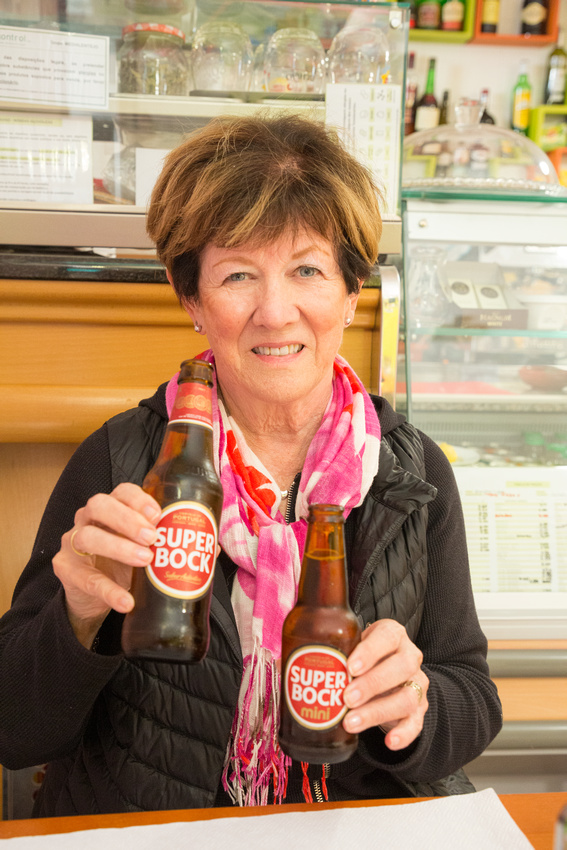

Guess who had the mini beer?
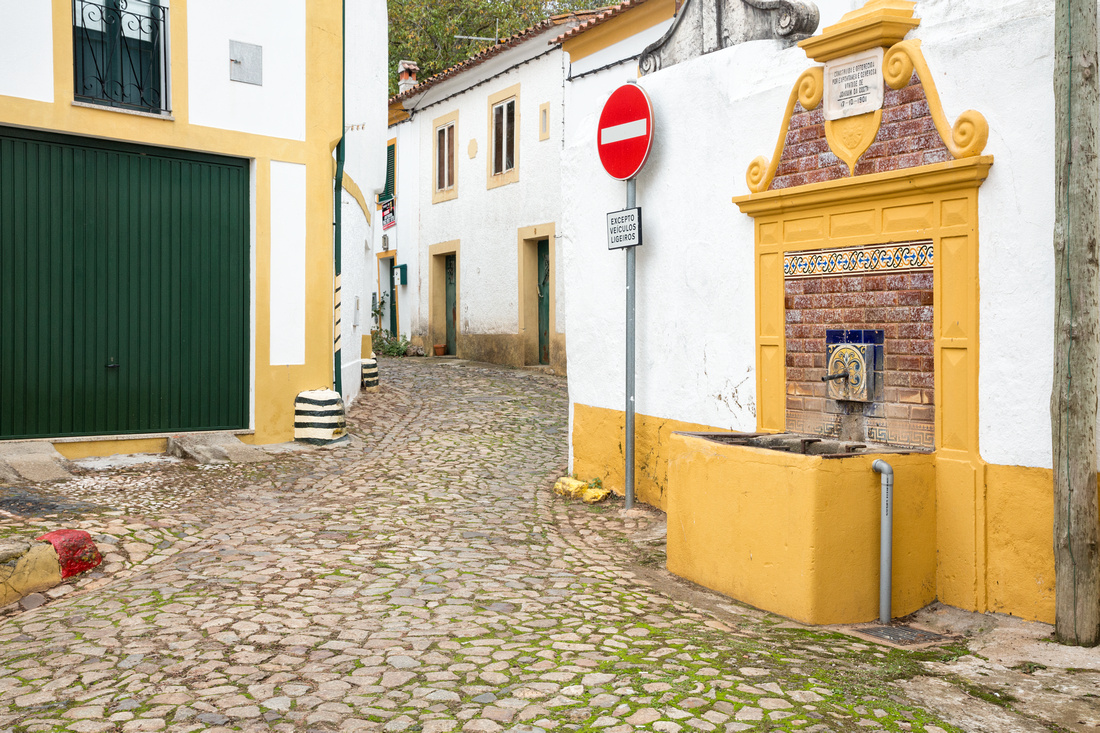
 Trying to find our way to Marvao, our GPS was sending us here - the wrong way on a one-way street through which our car would not fit.
Trying to find our way to Marvao, our GPS was sending us here - the wrong way on a one-way street through which our car would not fit.
So we backtracked and asked a family who was picking chestnuts for directions, and we were eventually on our way.
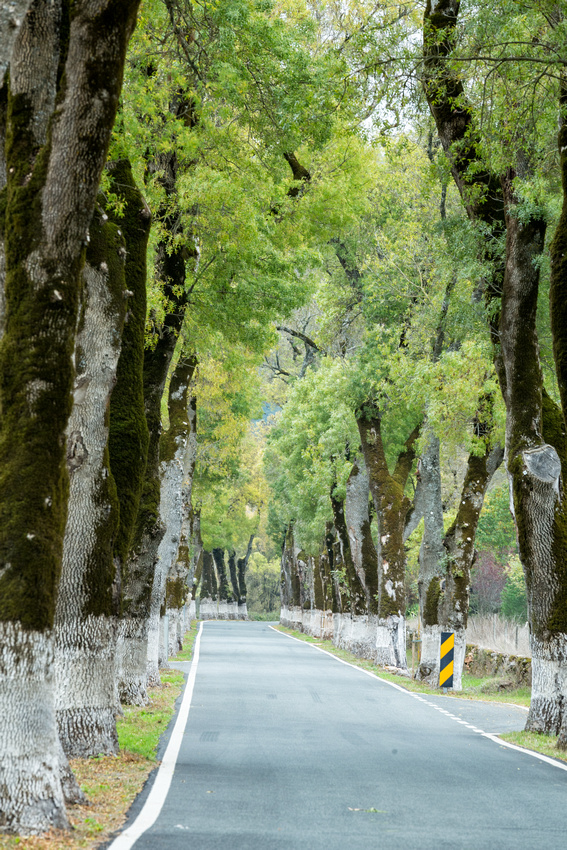

We followed this road, and then turned and began an uphill climb on a narrow road.
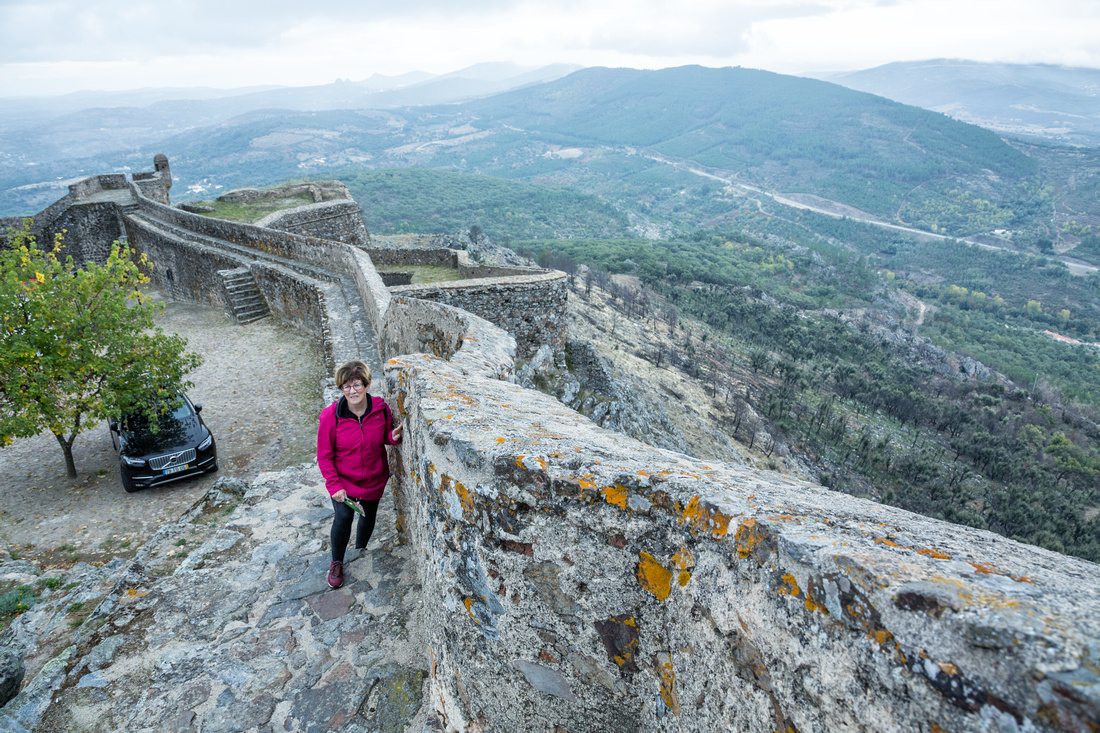
 We arrived at our destination, Marvao, a fortified hilltop village.
We arrived at our destination, Marvao, a fortified hilltop village.
Here are some scenes in Marvao.
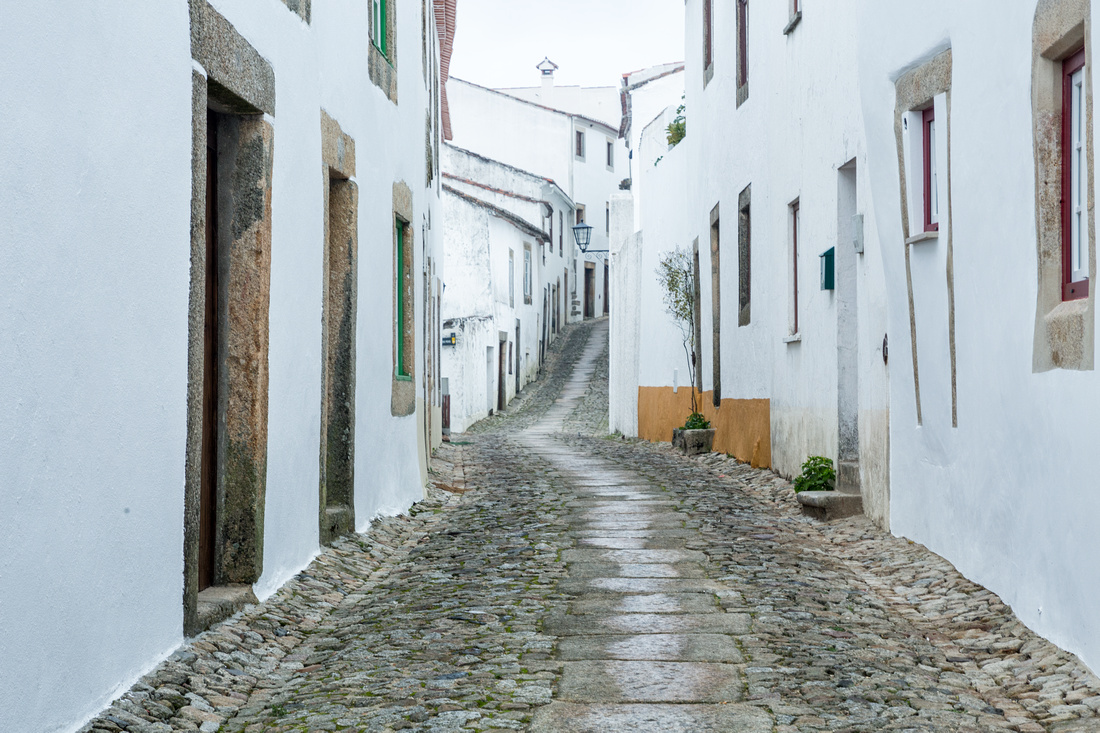

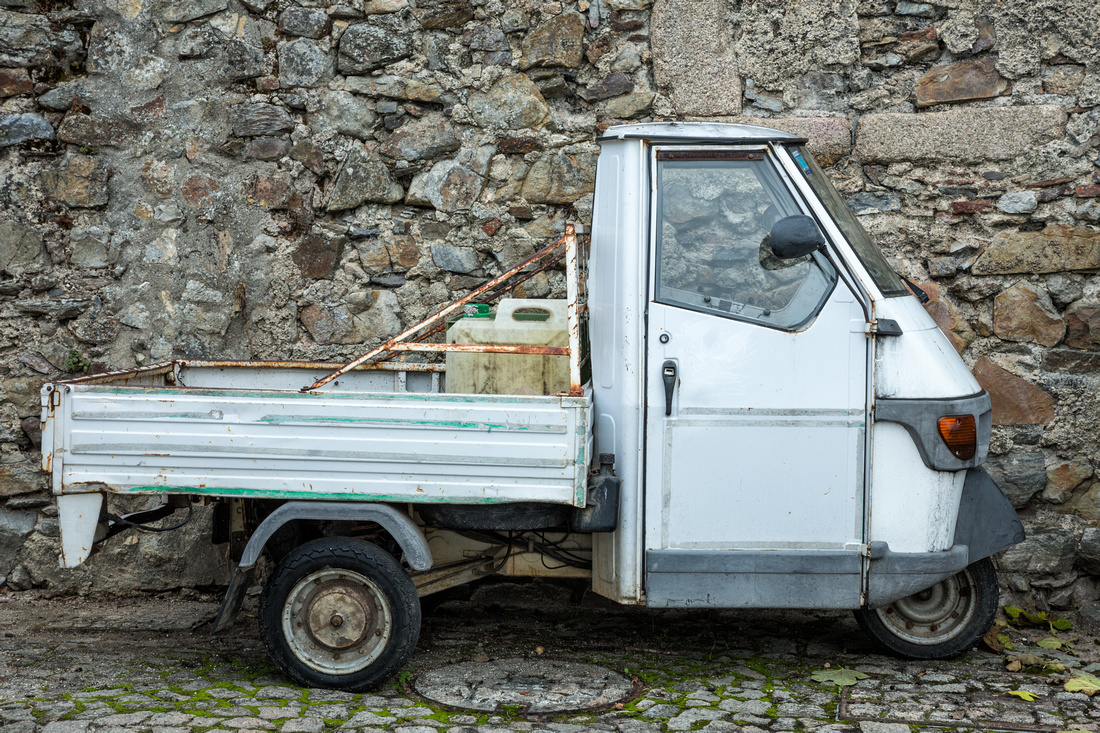

I think Rick should trade up for this work truck - perfect for Manitoulin.
And for those of you who have been wondering if there are any old churches in Portugal, here you are.
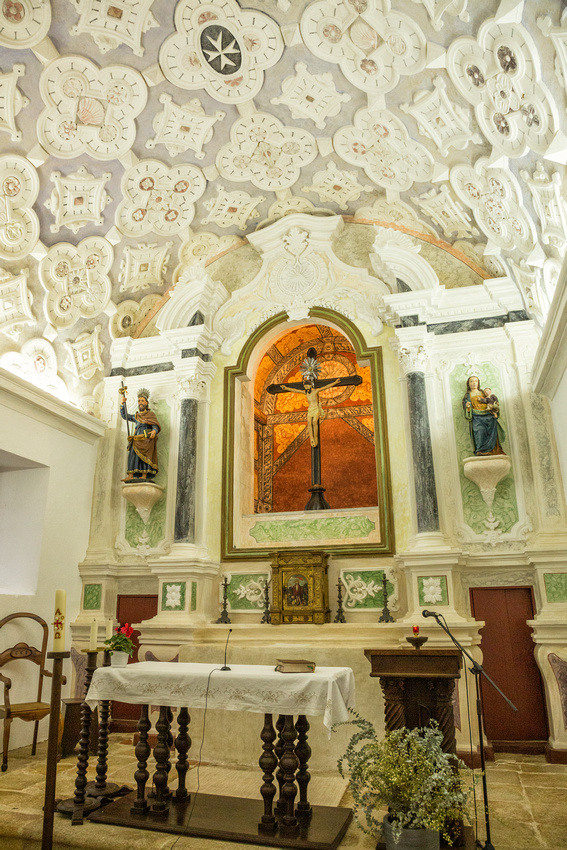

This is Igreja (church) Santiago de Marvao, originating from 1321.
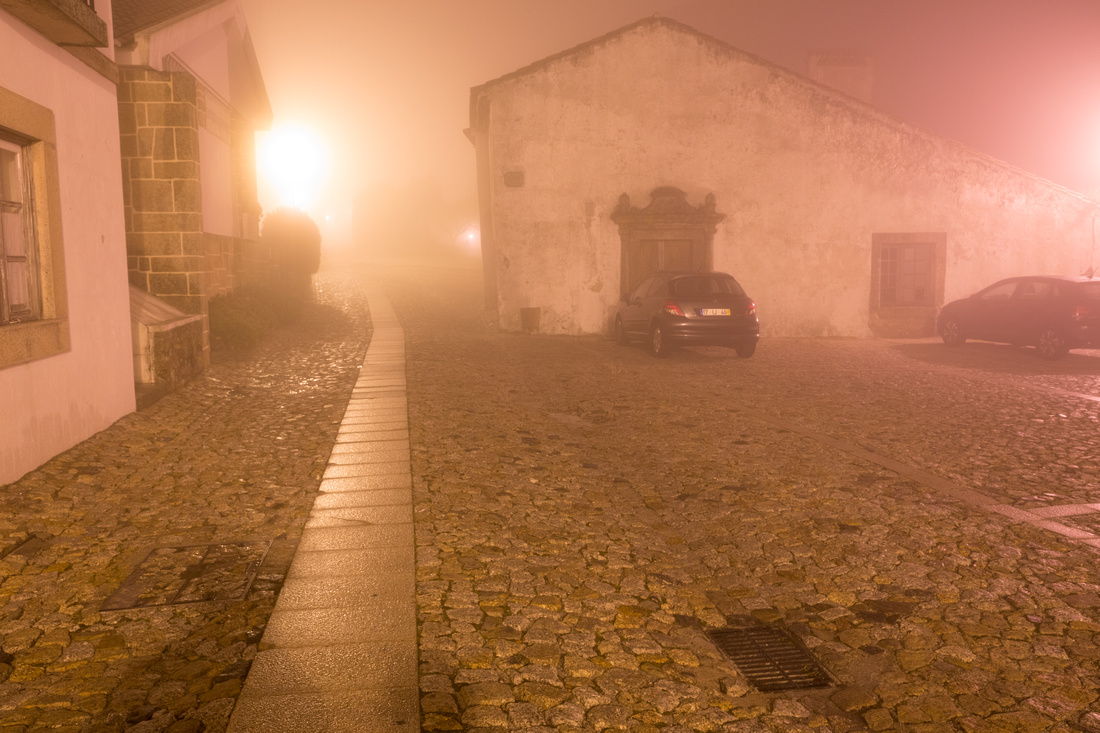
 As darkness descended, the fog rolled in. And so we rolled into bed (after a little wine).
As darkness descended, the fog rolled in. And so we rolled into bed (after a little wine).
October 27 - Portugal, Day 10
This was a quiet day, by choice. When Veda checked the time on her FitBit she could not figure out why it was an hour behind the house clocks. The puzzle was soon solved: Portugal had switched to standard time. So we'll have darkness earlier every day.
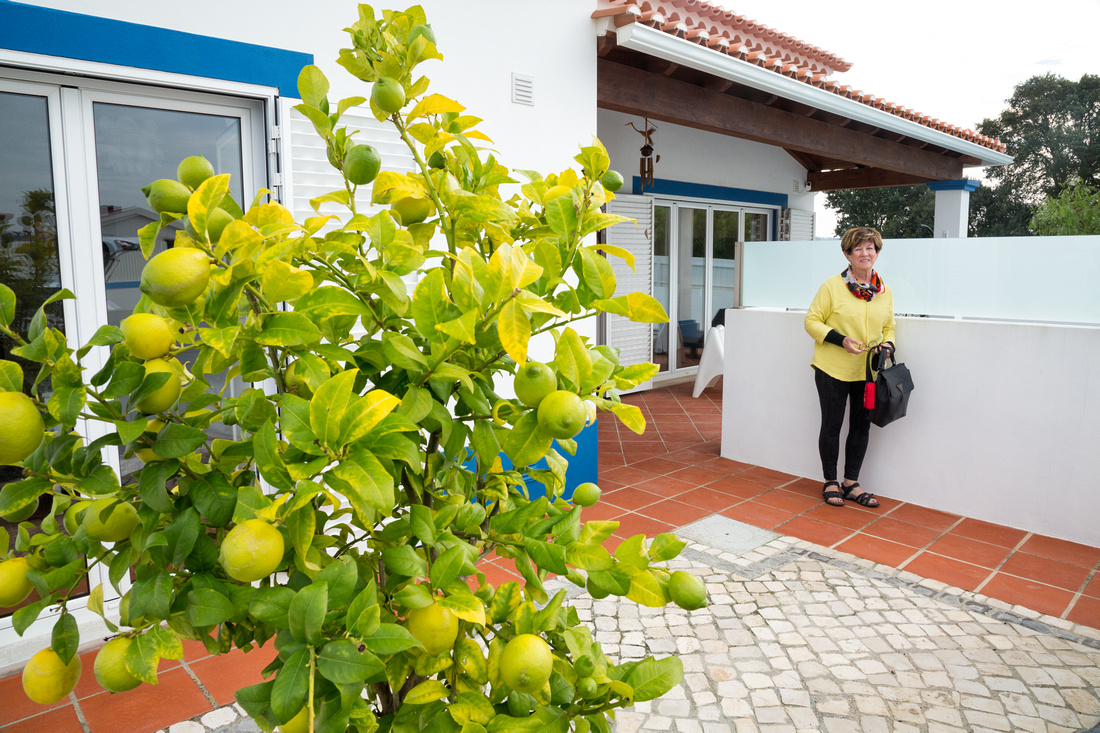
 This will be our last day at this house in Gracieiras. It has been a fantastic location to live at as we toured in this region. It's been nice to be in a home rather than a hotel room. Thanks to Gaelen again for setting us up with his friends, Chad and Kristen, who own this house.
This will be our last day at this house in Gracieiras. It has been a fantastic location to live at as we toured in this region. It's been nice to be in a home rather than a hotel room. Thanks to Gaelen again for setting us up with his friends, Chad and Kristen, who own this house.
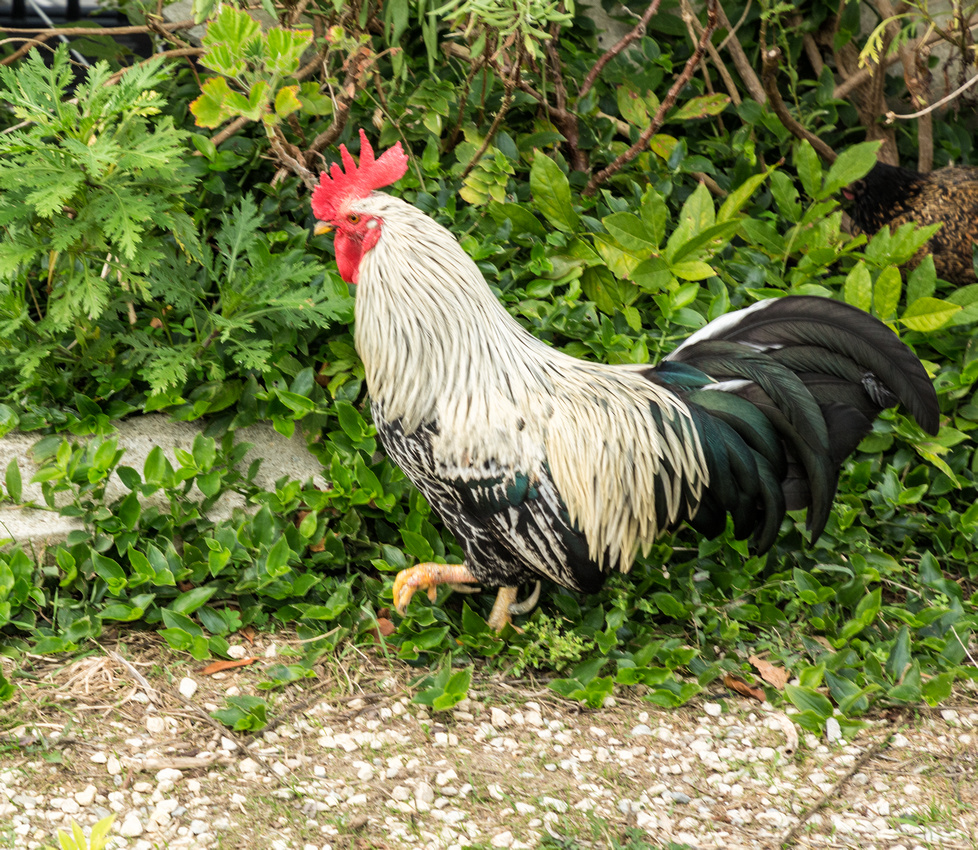
 One of the locals.
One of the locals.
We decided to take the short drive again to Obidas. This time we took a different route along this narrow road.
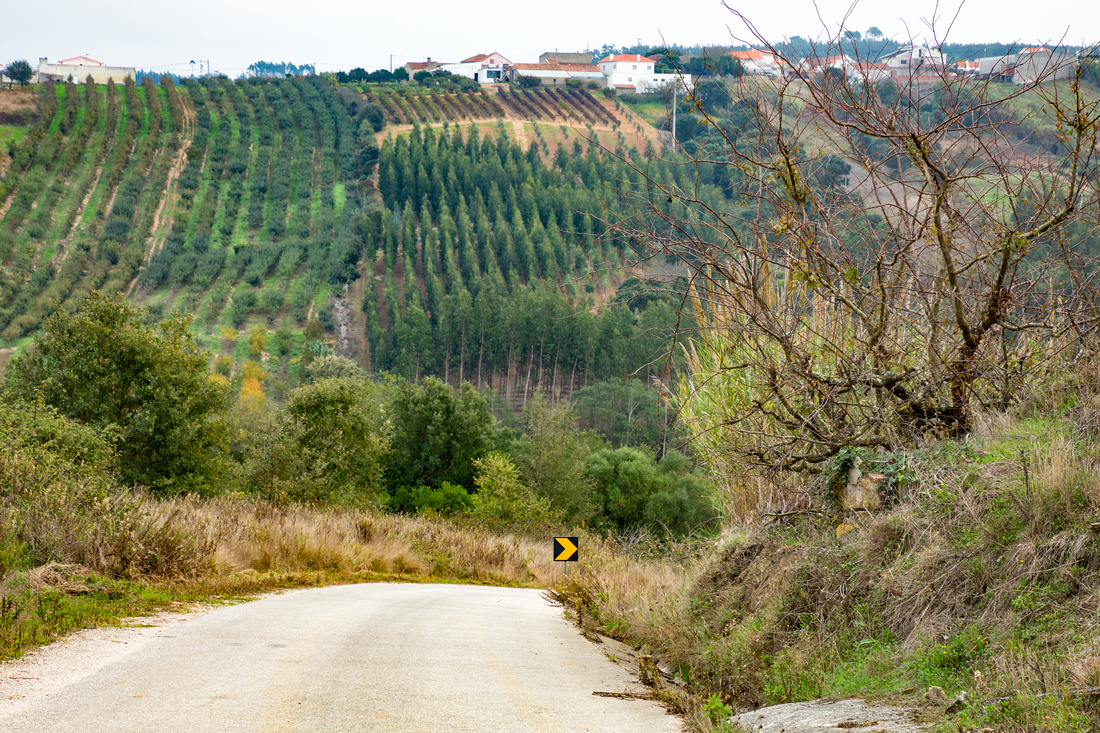

I took these photos along the road in a small village, Casias Brancos.
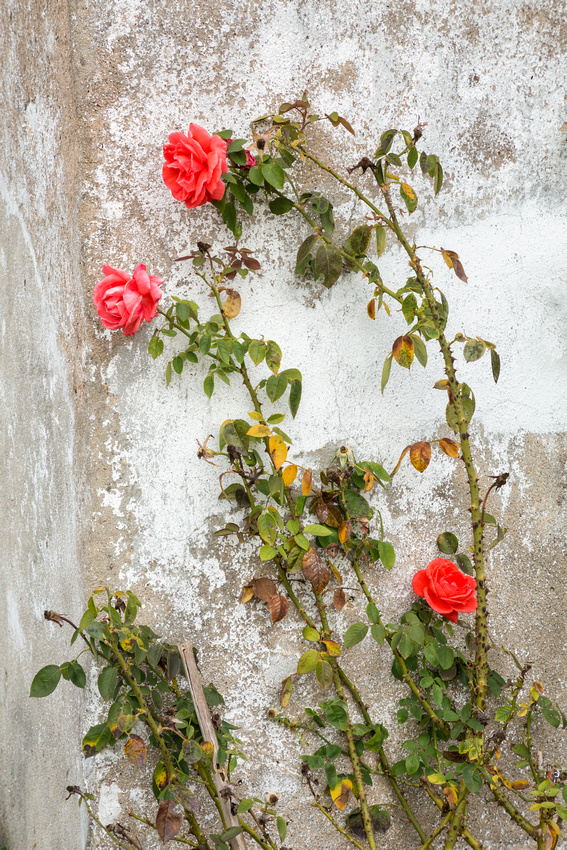

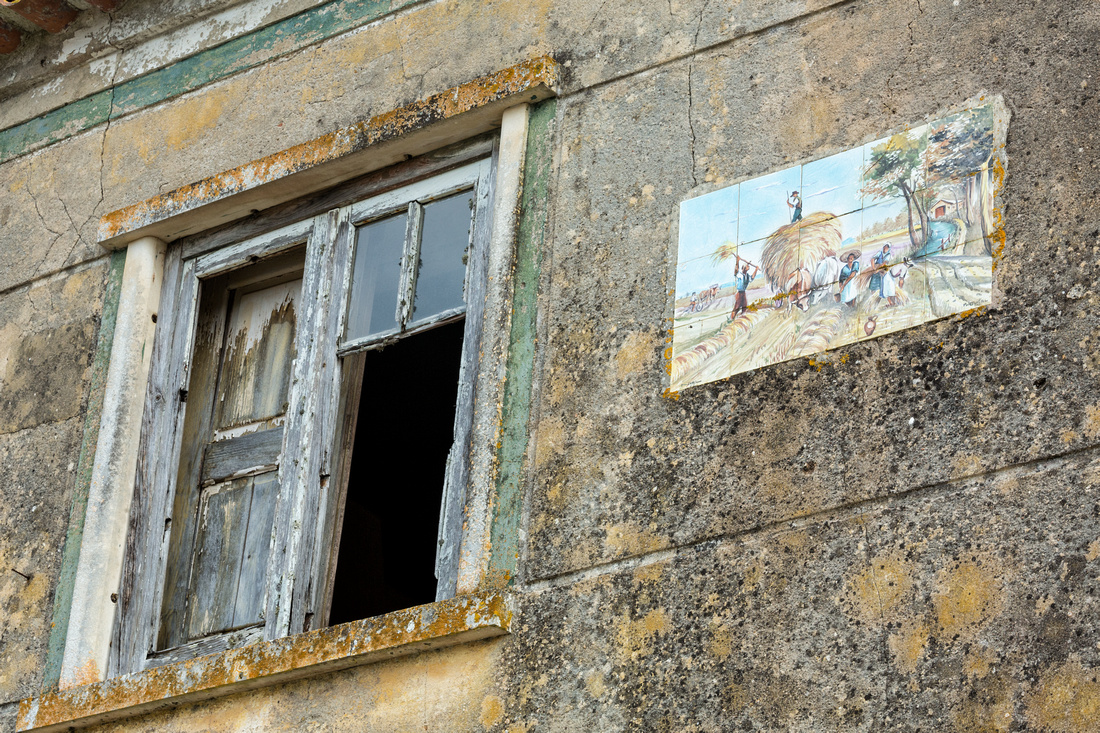
 There is something that attracts us photographers to the falling down, dilapidated...
There is something that attracts us photographers to the falling down, dilapidated...
At Obidos, we walked the narrow main street and did some shopping.
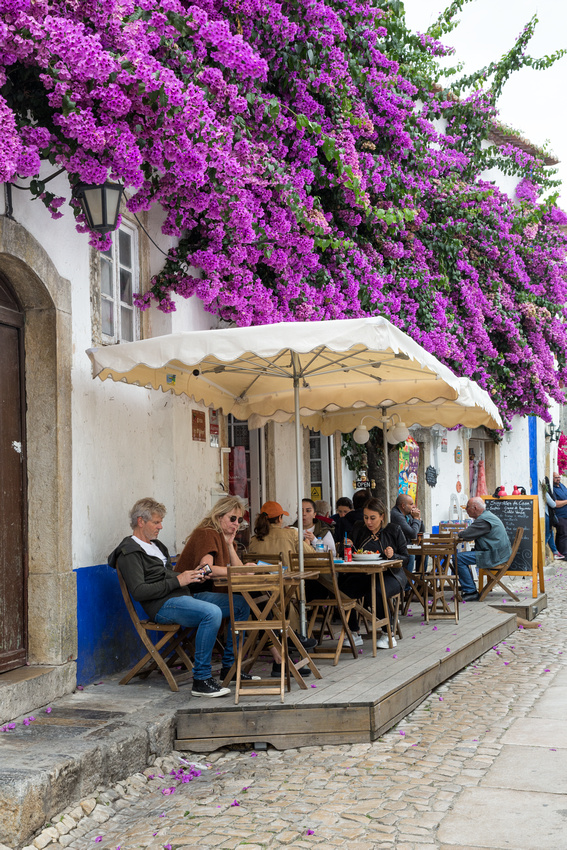

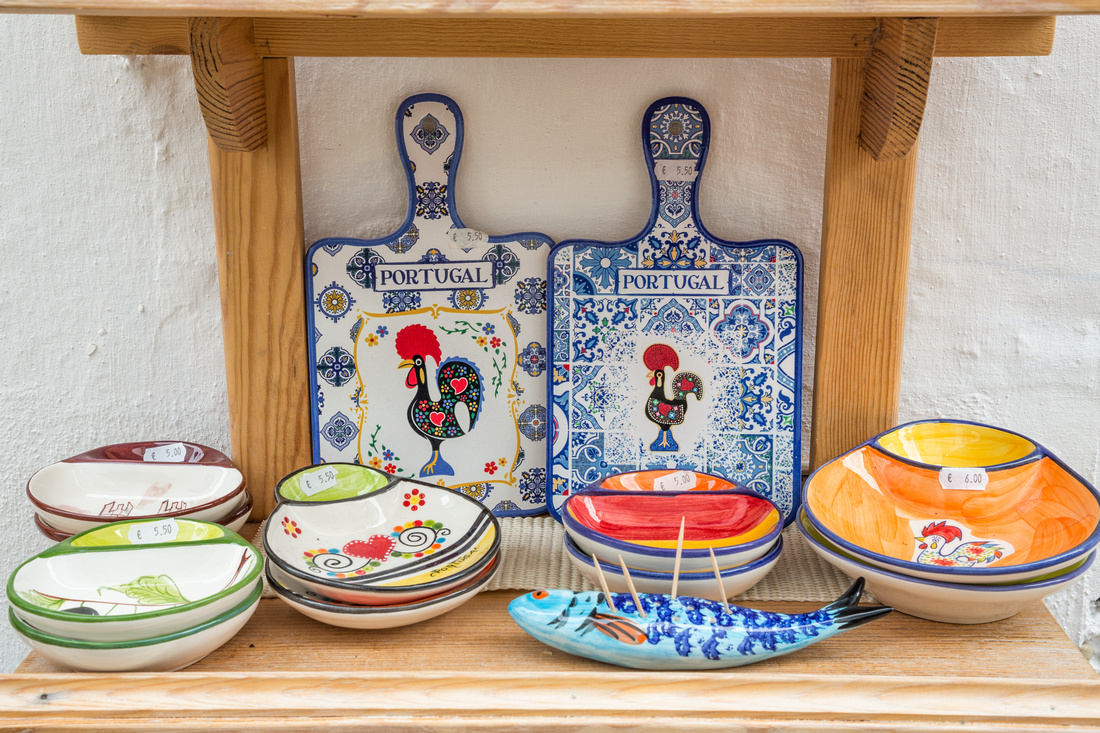
 This evening we had Jan and Sandy (relatives of Kristen and Chad) who live around the corner for a glass of wine.
This evening we had Jan and Sandy (relatives of Kristen and Chad) who live around the corner for a glass of wine.
October 26 - Portugal, Day 9
Another sunny warm day, so we decided to visit Peniche, on a headland jutting out into the Atlantic.
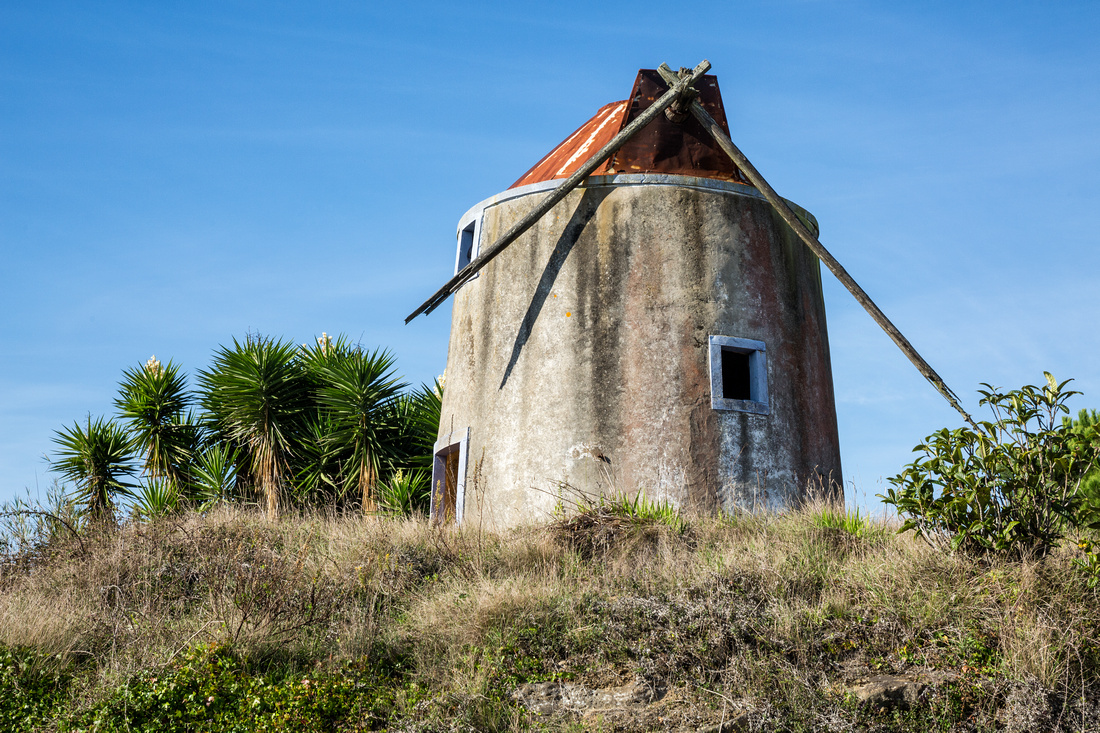
 En route, I stopped to photograph this abandoned old windmill. Some of these have been converted into unique vacation dwellings.
En route, I stopped to photograph this abandoned old windmill. Some of these have been converted into unique vacation dwellings.


The drive took us through the village of Atouguia de Baleia, where in the square we saw this 16th century church.
Then it was on to our destination, the walled village of Peniche jutting out into the Atlantic.
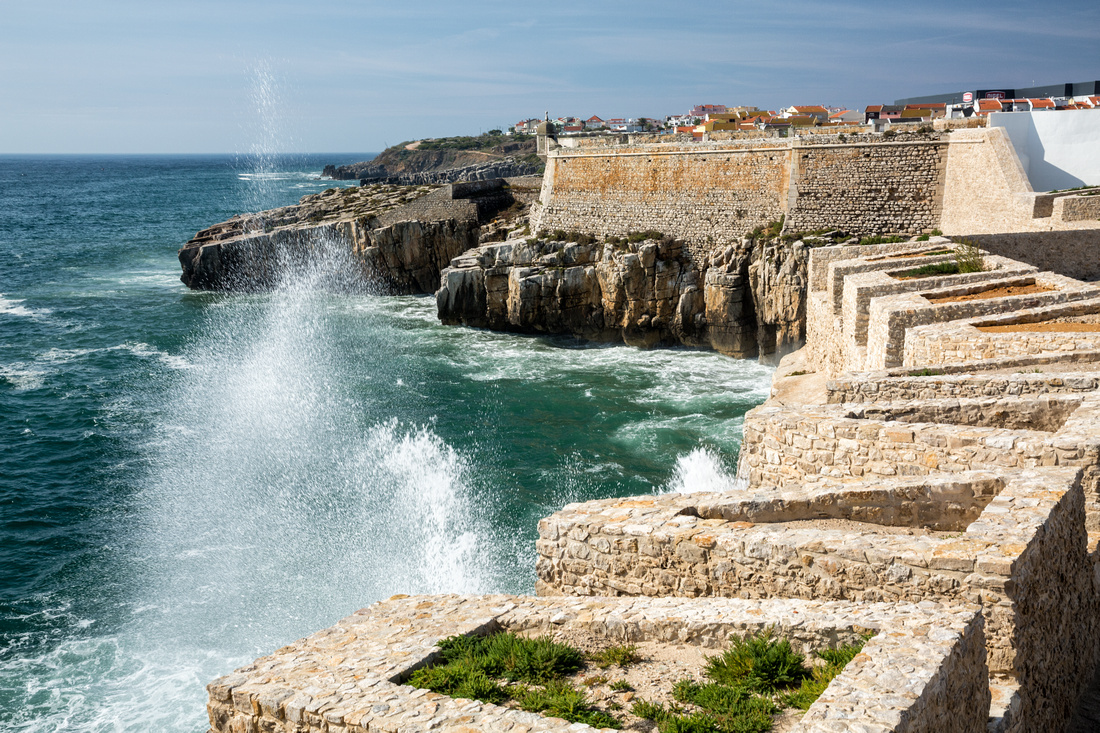

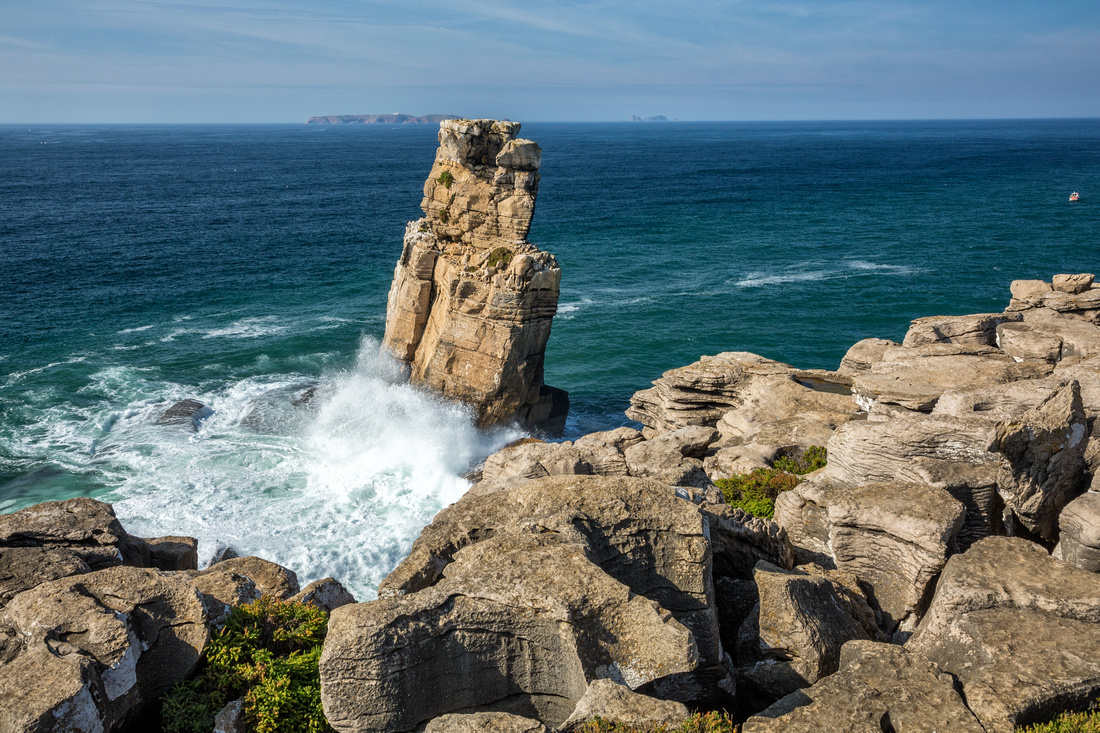

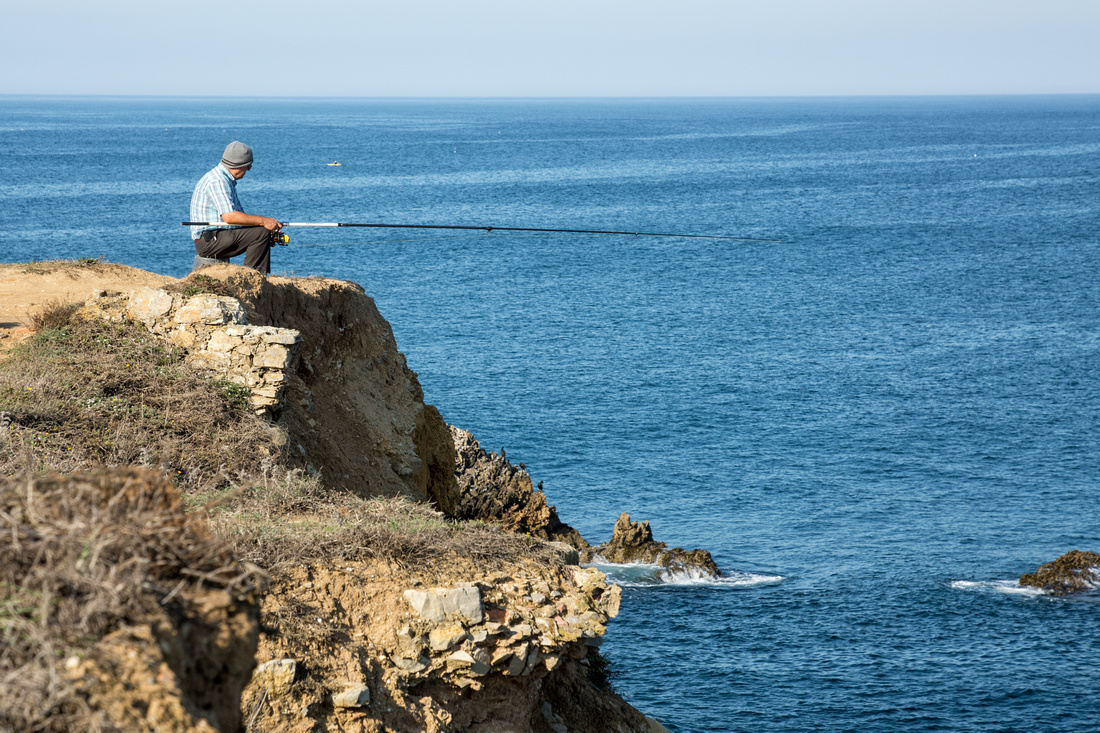
 We drove around the walled town along the coast where I photographed these views.
We drove around the walled town along the coast where I photographed these views.
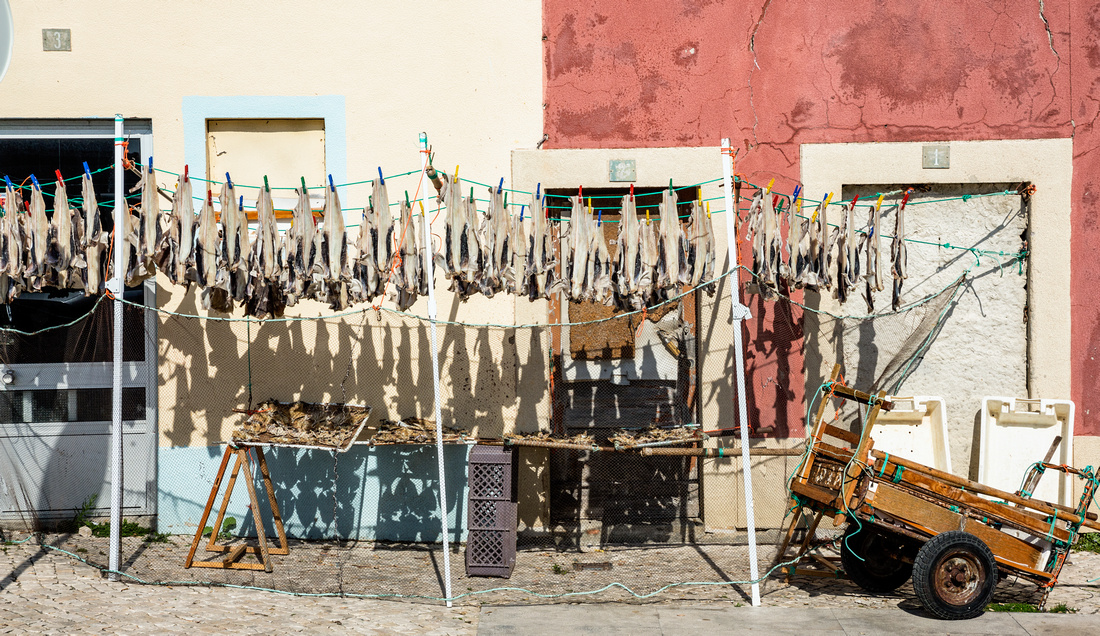
 Here we see cod being dried in the village.
Here we see cod being dried in the village.
One resident was barbecuing chicken, not fish.
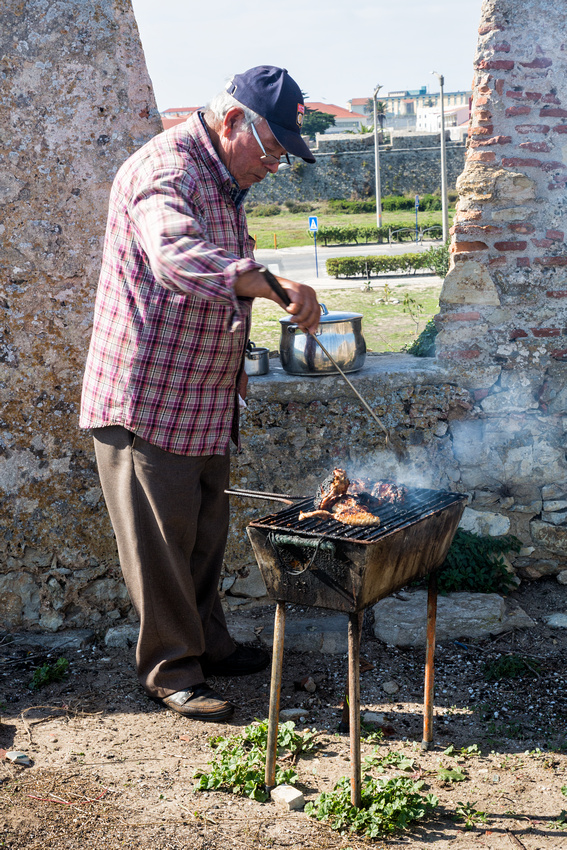

After we returned to Gracieira and Casa Vinhedo, where we've been staying for the last few days, I went for an exploratory stroll.
These are three photos I made on that walk.
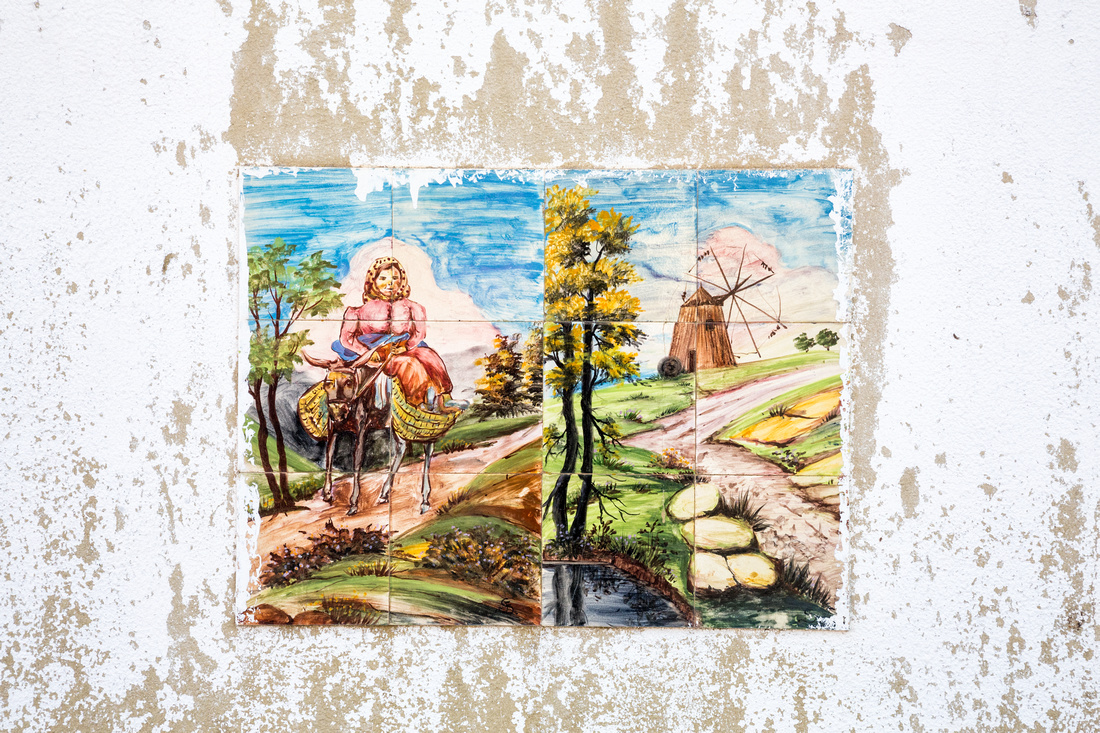

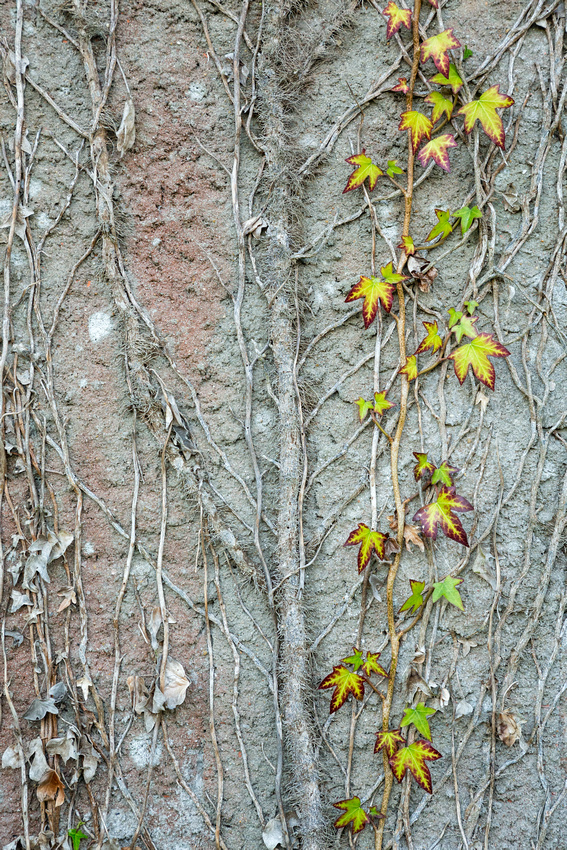

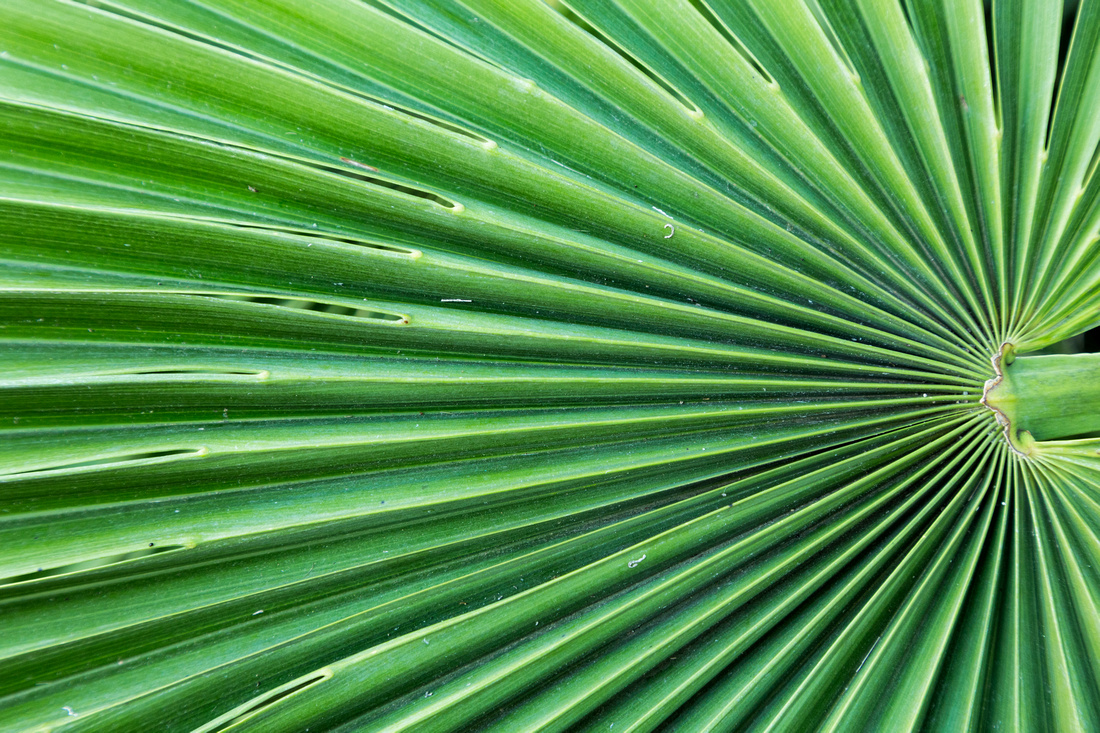

October 25 - Portugal, Day 8
Today dawned bright and sunny. It was cool in the morning, but warmed up considerably later in the day.
Our first stop was at the daily market in Caldas da Rainha, about 10 kilometers to the east.
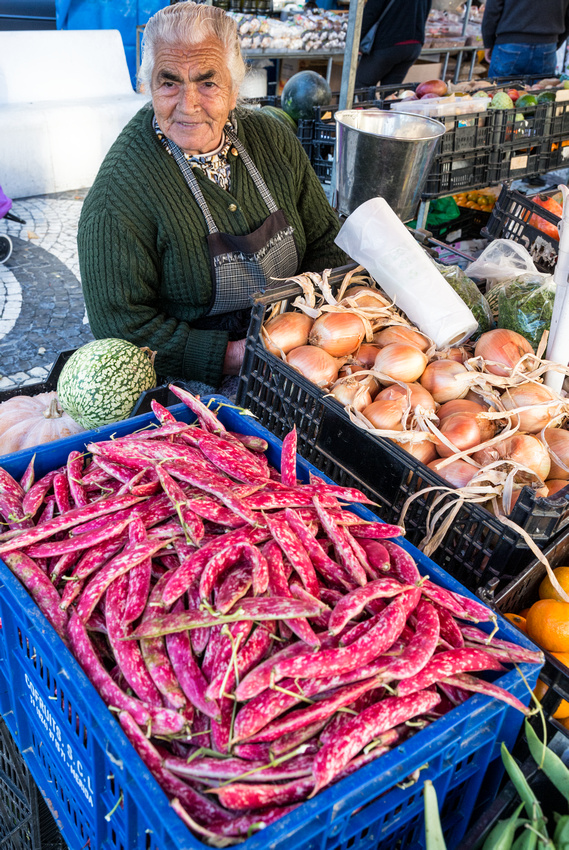

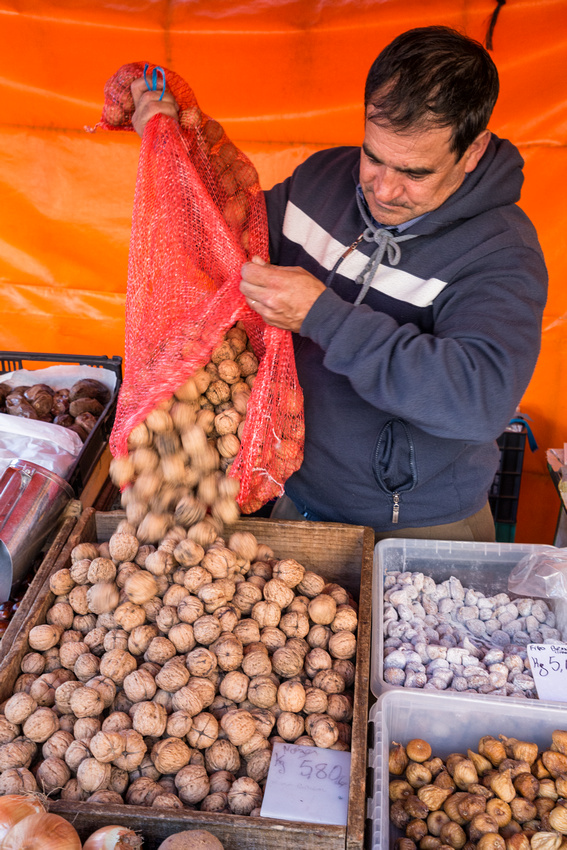

We then drove to the coast to the small village of Foz do Arelho. Here we walked the immense sand beaches and watched the waves crash on shore.
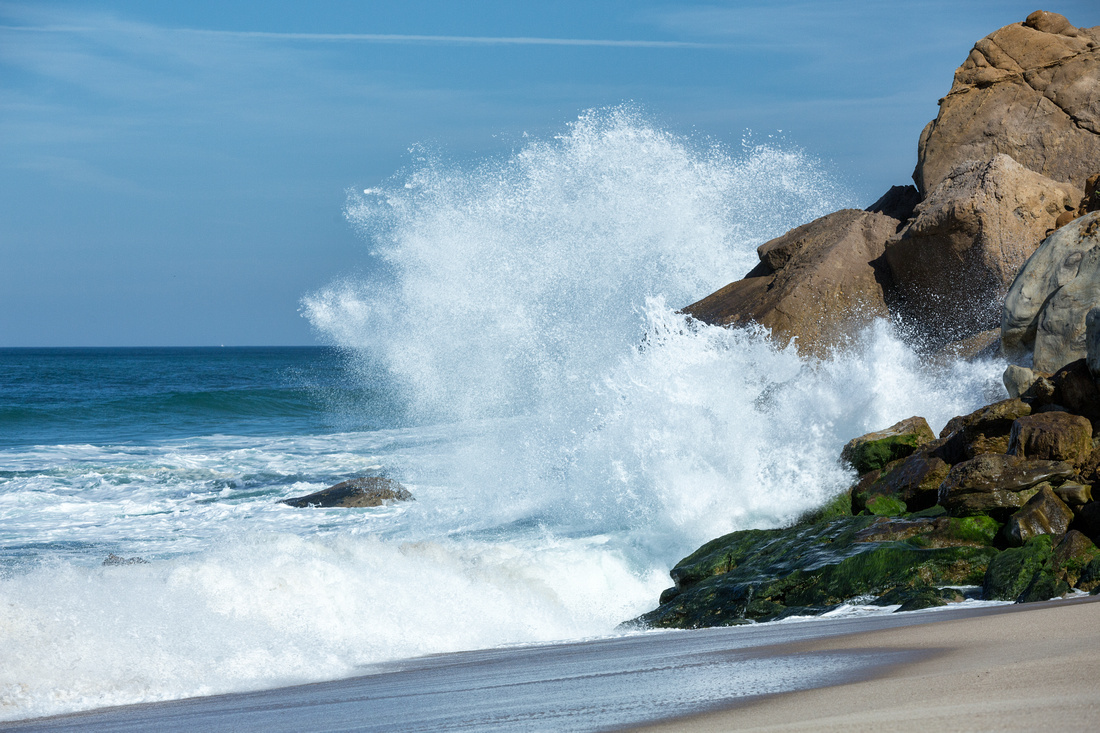
 Its lagoon was surrounded by these immense sand beaches, where we watched the Atlantic waves crashing on shore.
Its lagoon was surrounded by these immense sand beaches, where we watched the Atlantic waves crashing on shore.
We then continued north to Nazare, which boasts the world's largest surfing waves, up to 100 feet high.
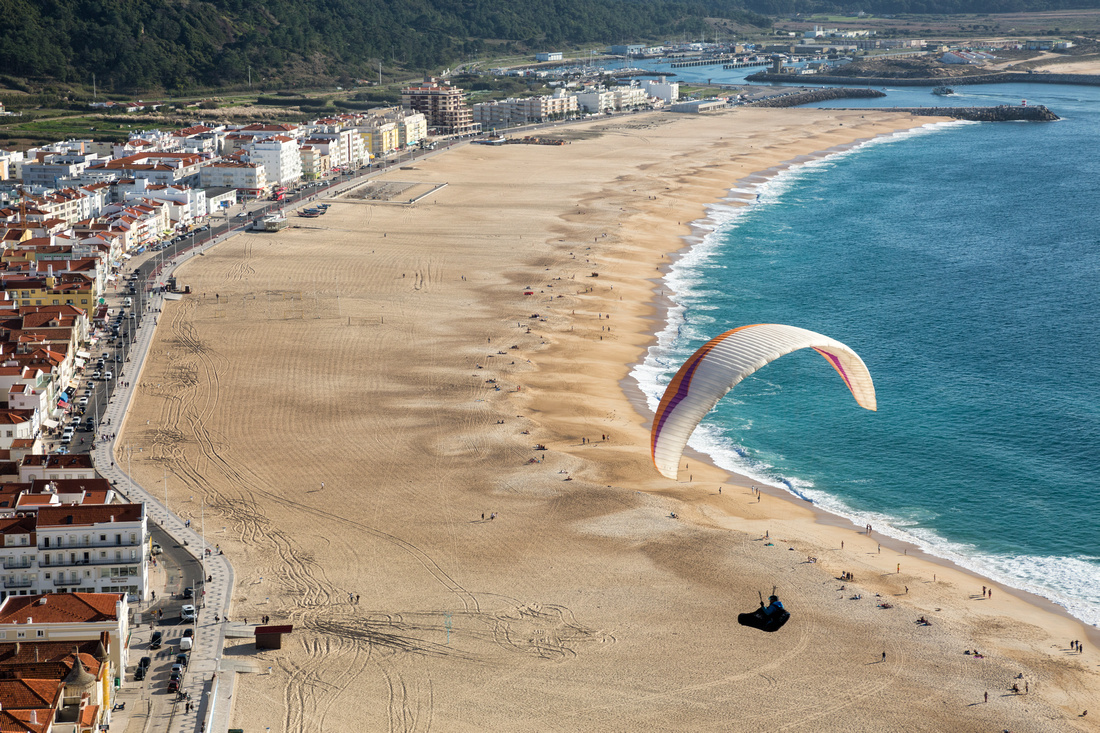
 In the summer this beach is packed with umbrellas and sun bathers. Much more civilized today.
In the summer this beach is packed with umbrellas and sun bathers. Much more civilized today.
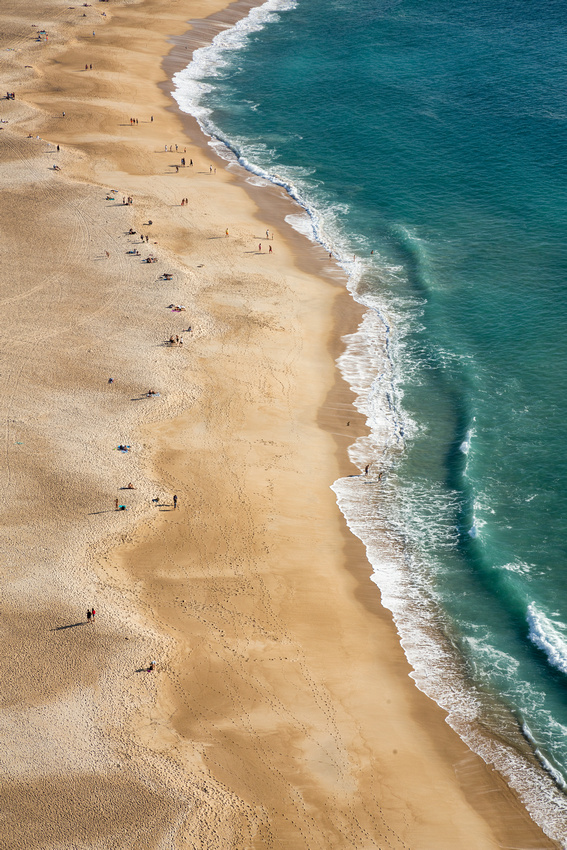

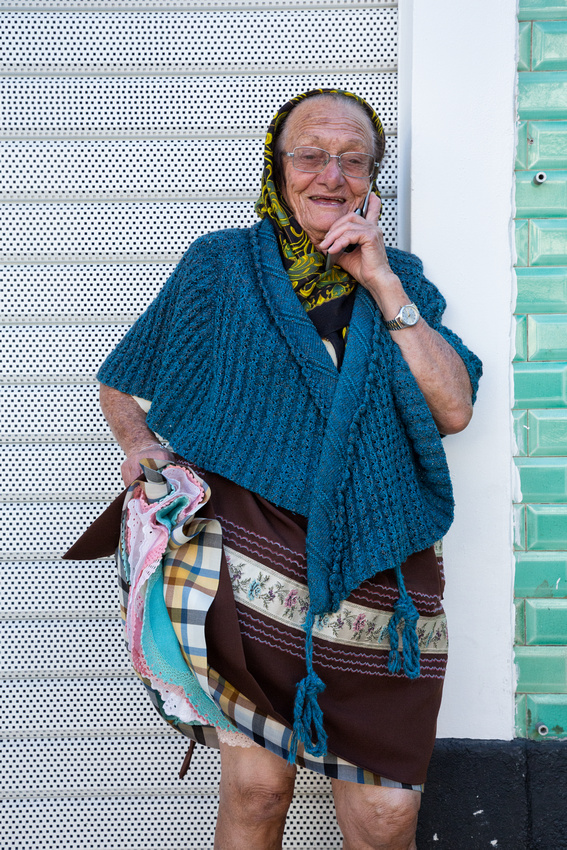

This is Jasmin, displaying her traditional petticoats which some of the older women still wear.